Comprehensive Guide to Liver Enzyme Normal Ranges, High and Low Levels, Symptoms, and Causes
What is the normal range for liver enzymes? What causes high or low liver enzyme levels? How are liver enzymes tested and what do the results mean? Explore the symptoms, causes, and treatments for abnormal liver enzyme levels.
Understanding Liver Function Tests (LFTs)
Liver function tests (LFTs), also known as liver panels or liver profiles, are a group of blood tests that measure different enzymes, proteins, and substances produced by the liver. These tests provide valuable insights into the overall health and functioning of the liver.
Key Liver Enzymes: ALT and AST
Two of the most important liver enzymes measured in LFTs are alanine aminotransferase (ALT) and aspartate aminotransferase (AST). These enzymes, also called aminotransferases or transaminases, are normally found within liver cells. When the liver is damaged, these enzymes are released into the bloodstream, causing their levels to rise.

Normal Ranges for Liver Enzymes
The normal range for AST is typically 5 to 40 units per liter (U/L) of serum, while the normal range for ALT is 7 to 56 U/L. However, normal ranges can vary slightly between different laboratories and testing methods.
High (Elevated) Liver Enzyme Levels
Elevated levels of liver enzymes, particularly ALT and AST, can indicate various forms of liver disease or injury. Common causes of high liver enzymes include viral hepatitis, fatty liver disease, alcohol-related liver disease, and certain medications. Symptoms associated with high liver enzyme levels may include fatigue, abdominal pain, nausea, and jaundice.
Low Liver Enzyme Levels
Low levels of liver enzymes, while less common, can also occur. Potential causes of low liver enzyme levels include malnutrition, hypothyroidism, and certain genetic conditions. In some cases, low liver enzyme levels may not be indicative of any underlying health issue.
Interpreting Liver Enzyme Test Results
When interpreting liver enzyme test results, healthcare professionals consider the overall pattern of the test results, as well as the patient’s medical history and other clinical findings. Isolated elevations in a single liver enzyme may have different implications than elevations in multiple enzymes.

What causes high liver enzyme levels? Liver enzyme levels can become elevated due to a variety of factors, including:
- Viral hepatitis: Hepatitis viruses, such as hepatitis A, B, and C, can cause inflammation and damage to the liver, leading to elevated liver enzymes.
- Fatty liver disease: Conditions like non-alcoholic fatty liver disease (NAFLD) and alcoholic fatty liver disease can lead to the accumulation of fat in the liver, which can cause liver damage and elevated enzyme levels.
- Alcohol consumption: Excessive alcohol intake can directly damage liver cells, resulting in elevated liver enzymes.
- Certain medications: Some medications, such as statins, antibiotics, and acetaminophen, can cause liver injury and elevated enzyme levels.
- Liver injury or disease: Any condition that damages the liver, such as cirrhosis, liver cancer, or bile duct obstruction, can lead to elevated liver enzymes.
How are liver enzyme levels tested? Liver enzymes are typically measured through a blood test, also known as a liver function test (LFT) or liver panel. This test involves taking a sample of blood and analyzing it to determine the levels of various liver enzymes and other substances.

What do high liver enzyme levels mean? High levels of liver enzymes, particularly ALT and AST, can indicate liver damage or dysfunction. The specific implications of elevated liver enzymes will depend on the extent of the elevation, the pattern of enzyme changes, and the underlying cause. Healthcare professionals will typically further investigate the cause and provide appropriate treatment recommendations.
What causes low liver enzyme levels? While less common, low liver enzyme levels can also occur. Some potential causes of low liver enzyme levels include:
- Malnutrition: Deficiencies in certain nutrients, such as protein or vitamin B6, can lead to low liver enzyme levels.
- Hypothyroidism: Underactive thyroid function can result in decreased liver enzyme production.
- Genetic conditions: Some rare genetic disorders can cause low liver enzyme levels.
- Liver regeneration: In some cases, low liver enzyme levels may be a temporary result of the liver’s ability to regenerate and repair itself.
What do low liver enzyme levels mean? Low levels of liver enzymes are less common and often less concerning than high levels. However, healthcare professionals will still investigate the underlying cause and provide appropriate recommendations, if necessary.

How can I lower high liver enzyme levels? The approach to lowering high liver enzyme levels will depend on the underlying cause. Potential interventions may include:
- Treating the underlying liver condition: This may involve medication, lifestyle changes, or other medical interventions to address the root cause of the liver damage.
- Reducing alcohol consumption: For those with alcohol-related liver disease, reducing or abstaining from alcohol can help lower enzyme levels.
- Discontinuing or adjusting medications: If a medication is the cause of the elevated enzymes, the healthcare provider may recommend switching to an alternative or adjusting the dosage.
- Implementing dietary and lifestyle changes: Adopting a healthier diet, maintaining a healthy weight, and engaging in regular physical activity can help support liver health and reduce enzyme levels.
In summary, understanding liver enzyme levels and their normal ranges is crucial for assessing liver health and identifying potential problems. By recognizing the causes of high or low liver enzyme levels and seeking appropriate medical attention, individuals can take steps to address underlying liver-related issues and maintain optimal liver function.

Liver Function Tests-Ranges-High & Low
Liver Function Tests (LFT)
Liver function tests (LFT) are blood tests, which are commonly performed to assess liver functions or liver injury. LFT is also known by other names such as, liver panel, liver function panel, liver profile hepatic function panel, LFT.
An initial step in detecting liver damage is a simple blood test to determine the level of certain liver enzymes (proteins) in the blood. Under normal circumstances, these enzymes mostly reside within the cells of the liver.
But when the liver is injured for any reason, these enzymes are spilled into the blood stream. Enzymes are proteins that are present throughout the body, each with a unique function.
Enzymes help to speed up (catalyze) routine and vital chemical reactions in the body.
Liver function tests (also known as a liver panel) are blood tests that measure different enzymes, proteins, and other substances made by the liver. These tests check the overall health of the liver.
These tests check the overall health of the liver.
Following are the different substances often tested at the same time on a single blood sample for LFT:
- Albumin a protein made in the liver
- Total protein. This test measures the total amount of protein in the blood.
- ALP ALP(alkaline phosphatase), ALT (alanine transaminase), AST (aspartate aminotransferase), and gamma-glutamyl transferase (GGT). These are different enzymes made by the liver.
- Bilirubin, a waste product made by the liver.
- Lactate dehydrogenase (LD), an enzyme found in most of the body’s cells. LD is released into the blood when cells have been damaged by disease or injury.
- Prothrombin time (PT), a protein involved in blood clotting.
If levels of one or more of these substances are outside of the normal range, it may be a sign of liver disease.
Aminotransferase Enzymes (ALT, AST)
The aminotransferase enzymes catalyze chemical reactions in which an amino group from one amino acid (amino acids are building blocks of proteins) is transferred from a donor molecule to a recipient molecule, hence, the names “aminotransferases.”
Medical terms can sometimes be confusing, as is the case with these enzymes because they have interchangeable names that commonly appear in both medical and non-medical articles. For example:
- Another name for aminotransferase is transaminase.
- The enzyme aspartate aminotransferase (AST) is also known as serum glutamic oxaloacetic transaminase (SGOT).
- Alanine aminotransferase (ALT) is also known as serum glutamic pyruvic transaminase (SGPT).
Briefly, AST = SGOT and ALT = SGPT; they are enzymes produced by the liver and other types of cells.
Alanine aminotransferase (ALT)
Alanine aminotransferase (ALT) is present primarily in liver cells. In viral hepatitis and other forms of liver disease associated with hepatic necrosis, serum ALT is elevated even before the clinical signs and symptoms of the disease appear.
Although serum levels of both aspartate aminotransferase (AST) and ALT become elevated whenever disease processes affect liver cell integrity, ALT is a more liver-specific enzyme.
Serum elevations of ALT are rarely observed in conditions other than parenchymal liver disease. Moreover, the elevation of ALT activity persists longer than does AST activity.
Aspartate Aminotransferase (AST)
Aspartate aminotransferase (AST) is a transaminase enzyme that catalyzes the conversion of aspartate and alpha-ketoglutarate to oxaloacetate and glutamate.
The AST enzyme was formerly known as serum glutamate oxalate transaminase (SGOT) and is present in all tissues except bone, with highest levels in liver and skeletal muscle. Concentration of AST is elevated after bruising, trauma, necrosis, infection, or neoplasia of liver or muscle.
Concentration of AST is elevated after bruising, trauma, necrosis, infection, or neoplasia of liver or muscle.
The AST enzyme is found in cerebrospinal fluid, exudates, and transudates in proportion to the amount of cellular damage.
Where AST (aspartate aminotransferase) and ALT (aminotransferase enzymes) are Found
AST (SGOT) is normally found in a variety of tissues including the liver, heart, muscle, kidney, and brain. It is released into the serum when any one of these tissues is damaged.
For example, the AST level in serum is elevated in heart attacks or with a muscle injury. It is, therefore, not a highly specific indicator of liver injury as its elevation can occur as a result of other injured tissues.
ALT (SGPT) is, by contrast, normally found largely in the liver. This is not to say that it is exclusively located in the liver, but that is where it is most concentrated.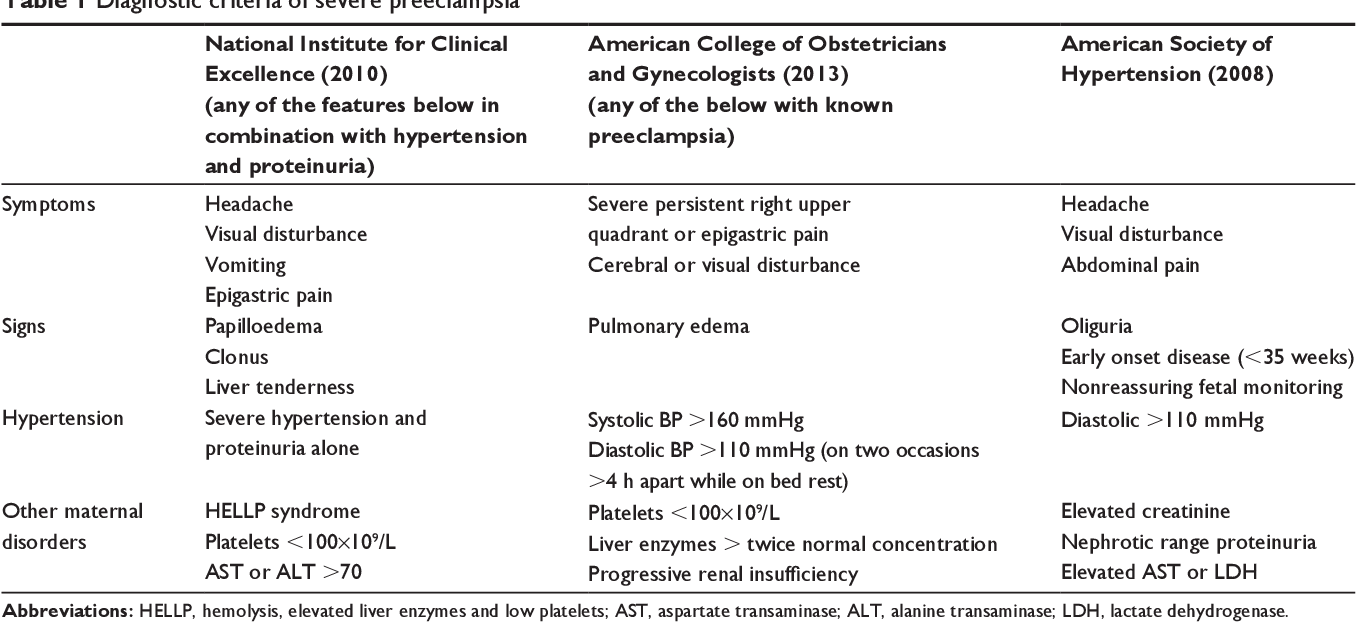
It is released into the bloodstream as the result of liver injury. Thus, it serves as a fairly specific indicator of liver status.
High (Elevated) Levels of AST and ALT
Following are the normal ranges of AST and ALT:
- The normal range of values for AST (SGOT) is about 5 to 40 units per liter of serum (the liquid part of the blood).
- The normal range of values for ALT (SGPT) is about 7 to 56 units per liter of serum.
The ranges of AST and ALT numbers may differ slightly depending on the technique and protocols used by different laboratories worldwide. However, normal reference ranges are routinely provided by each laboratory and printed with each patient’s individual report.
AST (SGOT) and ALT (SGPT) are reasonably sensitive indicators of liver damage or injury from different types of diseases or conditions, and collectively they are termed liver tests or liver blood tests.
However, it must be emphasized that higher-than-normal levels of these liver enzymes should not be automatically equated with liver disease. They may mean liver problems or they may not.
For example, elevations of these enzymes can occur with muscle damage. The interpretation of elevated AST and ALT results depends upon the entire clinical evaluation of an individual, and so it is best done by physicians experienced in evaluating liver disease and muscle disease.
Moreover, the precise levels of these liver enzyme tests do not correlate well with the extent of liver problems or the prognosis (outlook). Thus, the exact levels of AST (SGOT) and ALT (SGPT) cannot be used to determine the degree of liver disease or predict the future prognosis for liver function.
For example, patients with acute viral hepatitis-A may develop very high AST and ALT levels (sometimes in the thousands of units/liter range), but most patients with acute viral hepatitis-A recover fully without residual liver disease.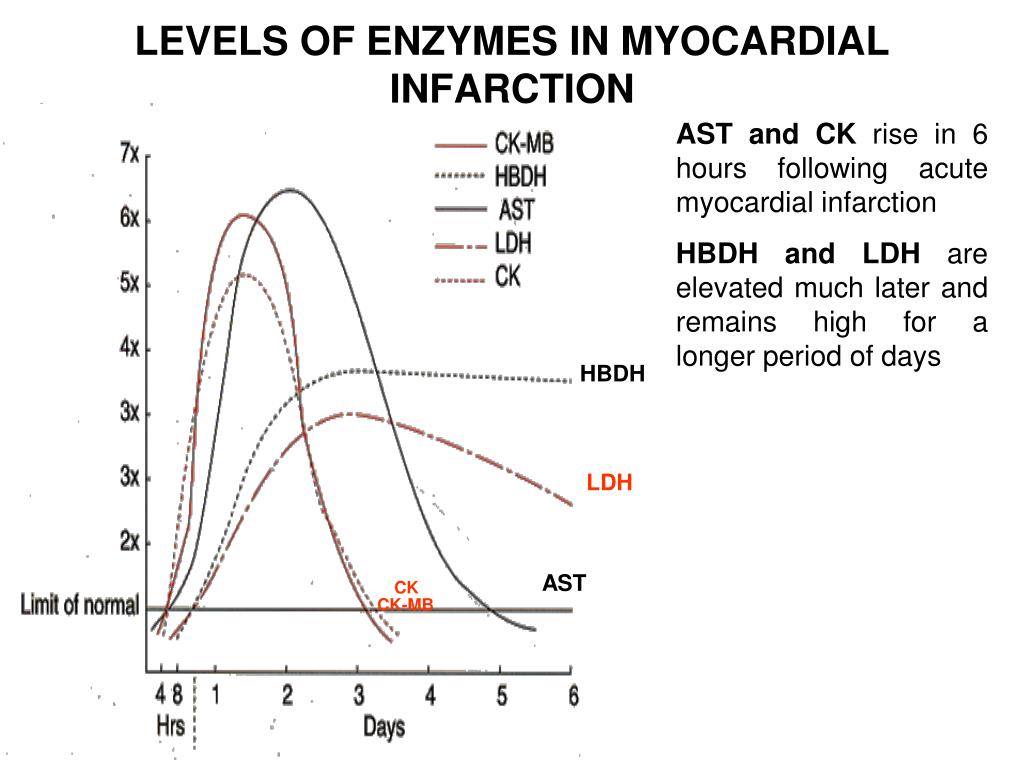
Again, patients with chronic hepatitis-C infection typically have only a little elevation in their AST and ALT levels while having substantial liver injury and even advanced scarring of the liver (cirrhosis) from ongoing minor inflammation of the liver.
Types of Liver Function Tests (LFT)
A liver function test is one of a group of tests that check levels of certain enzymes and other proteins in the blood. Some of the tests look for enzymes that are found in liver disease and when the liver is damaged. Others check that the liver is working properly, the way it should.
Following are some of the blood tests reflect liver function:
- Coagulation panel (prothrombin time or PT, and international normalized ratio or INR): These tests measure blood’s ability for normal clotting and prevention of bleeding and bruising. This is the function of certain proteins called clotting factors that normally are produced in the liver.
 Normal values are about 9.5 to 13.8 seconds.
Normal values are about 9.5 to 13.8 seconds. - Albumin level (hypoalbuminemia): Albumin is a very common protein found in the blood with a variety of functions. It also is produced only in the liver, and if its levels are lower than normal it can be suggestive of chronic liver disease or liver cirrhosis. Of note, many conditions other than liver disease also may cause low albumin levels. Normal values are about 3.5 to 5 g/dL.
- Bilirubin: This molecule is a byproduct of the routine destruction of red blood cells occurring in the liver. It is normally released as bile in the feces. Elevation of the bilirubin can suggest liver dysfunction. However, other conditions with increased destruction of red blood cells also can cause elevated bilirubin levels despite normal liver function. Normal values are about 0.1 to 1.0 mg/dL.
- Platelet count: Low platelet count (thrombocytopenia) has many causes, one of which can be advanced liver disease.
 Normal platelet counts are about 150,000 to 400,000 per (µL).
Normal platelet counts are about 150,000 to 400,000 per (µL). - Glucose: Glucose level is maintained in the body by a variety of mechanisms. The liver can release glucose in the blood for nourishment of other cells in case of starvation with insufficient oral intake of glucose. This process, called gluconeogenesis, is another major function of the liver. In advanced liver disease, this function of the liver can be compromised leading to unusually low glucose levels in the absence of adequate oral intake. Again, a large number of patients with liver cirrhosis become glucose intolerant and develop diabetes.
- GGT (Gamma-glutamyl transpeptidase): This enzyme is thought to indicate possible liver damage; the higher the abnormal level, the more likely there is liver damage. Normal levels of GGT are about 9 to 48 U/L.
- ALP (alkaline phosphatase): The liver synthesizes the highest amounts of this enzyme so high levels in the blood may suggest liver injury among other causes.
 Normal levels of ALP are about 45 to 115 U/L.
Normal levels of ALP are about 45 to 115 U/L. - LD or LDH (Lactate dehydrogenase): This enzyme may be elevated in many types of diseases, including liver disease. Normal levels are about 122 to 222U/L.
Reasons for Abnormal Liver Tests
Abnormal liver tests may be detected a variety of liver conditions in the blood. Some of those are the following:
- Mild to moderate elevations of the liver enzymes are common. They are often unexpectedly encountered on routine blood screening tests in otherwise healthy individuals. The AST and ALT readings in such cases are usually between twice the upper limits of normal and several hundred units/liter. One of the most common causes of mild to moderate elevations of these liver tests is a condition referred to as fatty liver disease (steatohepatitis or hepatic steatosis). In the United States, the most frequent cause of fatty liver disease is alcohol abuse.

Alcoholic fatty liver disease only happens in people who are heavy drinkers, especially those who have been drinking for a long period of time.
The risk is higher for heavy drinkers who are women, have obesity, or have certain genetic mutations.
Other causes of fatty liver include diabetes mellitus, and obesity. Fatty liver disease tests are composed of several tests including blood tests, CT and/or MRI scan tests, and in some patients, a liver biopsy.
- Hepatitis-B and Hepatitis-C are other causes of chronic mild to moderate liver enzyme elevation. In these conditions, ALT and AST may be only slightly high and the degree of abnormality in liver function tests can indicate the degree of injury.
- Chronic and acute alcohol use also can commonly cause abnormal liver blood tests. In alcoholic hepatitis, the range of liver tests can vary greatly.
 In chronic alcohol liver disease or alcoholic cirrhosis, slight elevation of ALT and AST may be observed, whereas, in acute alcoholic hepatitis, high liver enzyme numbers are often seen.
In chronic alcohol liver disease or alcoholic cirrhosis, slight elevation of ALT and AST may be observed, whereas, in acute alcoholic hepatitis, high liver enzyme numbers are often seen. - Some medications can be responsible for a mild to moderate increase in the liver enzyme tests.
Medications that can cause increased liver enzyme tests (AST and ALT) levels
Following are examples of some of the common medications with potential liver toxicity:
Pain Relief Medications
- Aspirin
- Acetaminophen (Tylenol)
- Ibuprofen (Advil, Motrin)
- Naproxen (Naprosyn, Naprelan, Anaprox, Aleve)
- Diclofenac (Voltaren, Cataflam, Voltaren-XR)
- Phenylbutazone (Butazolidine)
Anti-seizure Medications
- Phenytoin (Dilantin)
- Valproic acid ( Depakote)
- Carbamazepine (Tegretol)
- Phenobarbital
Antibiotics
- Tetracyclines (Achromycin)
- Sulfonamides
- Isoniazid (Nydrazid, Laniazid)
- Sulfamethoxazole (Gantanol)
- Trimethoprim(Trimpex; Proloprim, Primsol)
- Nitrofurantoin (Macrodantin, Furadantin, Macrobid)
- Fluconazole (Dilflucan) and other anti-fungals
Cholesterol Lowering Drugs (Statins)
- Lovastatin (Mevacor, Altocor)
- Pravastatin (Pravachol)
- Atorvastatin (Lipitor)
- Fluvastatin (Lescol)
- Simvastatin (Zocor)
- Rosuvastatin (Crestor)
- Niacin
Cardiovascular Drugs
- Amiodarone (Cordaone)
- Hydralazine (Apresoline)
- Quinidine (Quinaglute, Quinidex)
Other Drugs
- Antidepressant drugs of the tricyclic type
With drug-induced liver enzyme abnormalities, the enzymes usually normalize weeks to months after stopping the medications. Typically, the physician will want to monitor the patient’s liver enzymes over time to confirm that the values are normalizing.
Typically, the physician will want to monitor the patient’s liver enzymes over time to confirm that the values are normalizing.
Diseases that can cause very high AST or ALT levels
AST and ALT serum levels in some liver conditions can range anywhere from ten times the upper limits of normal to thousands of units/liter.
The highest levels of AST and ALT are found with disorders that cause rapid death of numerous liver cells (extensive hepatic necrosis). Although this degree of liver enzymes elevation is not common, it can occur in such conditions as:
- Acute viral hepatitis A or B
- Profound liver damage inflicted by toxins as from an overdose of acetaminophen (brand-name Tylenol) or mushroom poisoning
- Prolonged collapse of the circulatory system (shock) when the liver is deprived of fresh blood providing oxygen and nutrients
Also, very high AST and ALT levels can be a result of severe muscle diseases.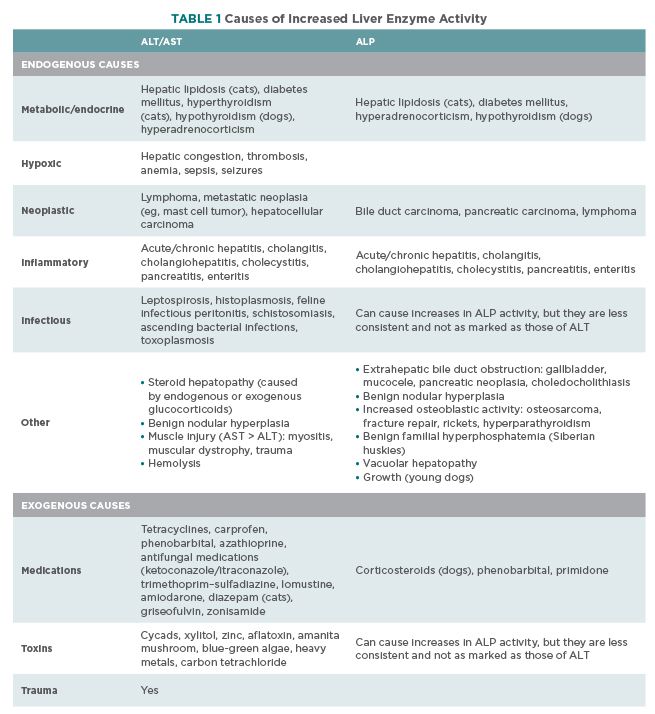
Bay Biosciences is a global leader in providing researchers with high quality, clinical grade, fully characterized human tissue samples, bio-specimens and human bio-fluid collections.
Samples available are cancer (tumor) tissue, cancer serum, cancer plasma cancer PBMC and human tissue samples from most other therapeutic areas and diseases.
Bay Biosciences maintains and manages its own bio-repository, human tissue bank (biobank) consisting of thousands of diseased samples (specimens) and from normal healthy donors available in all formats and types.
Our biobank procures and stores fully consented, deidentified and institutional review boards (IRB) approved human tissue samples and matched controls.
All our human tissue collections, human specimens and human bio-fluids are provided with detailed samples associated patient’s clinical data.
This critical patient’s clinical data includes information relating to their past and current disease, treatment history, lifestyle choices, biomarkers and genetic information.
Patient’s data is extremely valuable for researchers and is used to help identify new effective treatments (drug discovery & development) in oncology, other therapeutic areas and diseases.
Bay Biosciences banks wide variety of human tissue samples and biological samples including cryogenically preserved at – 80°C.
Including fresh frozen tissue samples, tumor tissue samples, FFPE’s, tissue slides, with matching human bio-fluids, whole blood and blood derived products such as serum, plasma and PBMC’s.
Bay Biosciences is a global leader in collecting and providing human tissue samples according to the researchers specified requirements and customized, tailor-made collection protocols.
Please contact us anytime to discuss your special research projects and customized human tissue sample requirements.
Bay Biosciences provides human tissue samples (human specimens) from diseased and normal healthy donors which includes:
- Peripheral whole-blood,
- Amniotic fluid
- Bronchoalveolar lavage fluid (BAL)
- Sputum
- Pleural effusion
- Cerebrospinal fluid (CSF)
- Serum (sera)
- Plasma
- Peripheral blood mononuclear cells (PBMC’s)
- Saliva
- Buffy coat
- Urine
- Stool samples
- Aqueous humor
- Vitreous humor
- Kidney stones (renal calculi)
- Other bodily fluids from most diseases including cancer.

We can also procure most human bio-specimens and can-do special collections and requests of human samples that are difficult to find. All our human tissue samples are procured through IRB approved clinical protocols and procedures.
In addition to the standard processing protocols Bay Biosciences can also provide human plasma, serum, PBMC bio-fluid samples using custom processing protocols, you can buy donor specific sample collections in higher volumes and specified sample aliquots from us.
Bay Biosciences also provides human samples from normal healthy donors, volunteers, for controls and clinical research, contact us Now.
日本のお客様は、ベイバイオサイエンスジャパンBay Biosciences Japanまたはhttp://baybiosciences-jp.com/contact/までご連絡ください。
A review on laboratory liver function tests
1. Mauro P, Renze B, Wouter W. In: Tietz text book of clinical chemistry and molecular diagnostics. 4th edition. Carl AB, Edward R, David EB, editors. Elsevier; 2006. Enzymes; pp. 604–616. [Google Scholar]
4th edition. Carl AB, Edward R, David EB, editors. Elsevier; 2006. Enzymes; pp. 604–616. [Google Scholar]
2. Diana Nicoll C. In: Current medical diagnosis and treatment. 46th edition. Stephen JM, Maxine AP, editors. Mc Graw hill; 2007. Appendix: Therapeutic drug monitoring and laboratory reference ranges; pp. 1767–1775. [Google Scholar]
3. Thapa BR, Anuj W. Liver Function Tests and their Interpretation. Indian J Pediatr. 2007;74:663–671. [PubMed] [Google Scholar]
4. Wong HY, Tan JYL, Lim CC. Abnormal liver function test in symptomatic pregnant patient: The local experience in Singapore. Annals academy of Medicine. 2004;33:204–208. [PubMed] [Google Scholar]
5. Beckingham IJ, Ryder SD. Clinical review ABC of diseases of liver, pancreas, and biliary system Investigation of liver and biliary disease. BMJ. 2001;322:33–36. [PMC free article] [PubMed] [Google Scholar]
6. Thomsen HF, Hardt F, Juhl E. Diagnosis of Gilbert’s syndrome. Scand J Gastroenterol. 1981;16:699–703.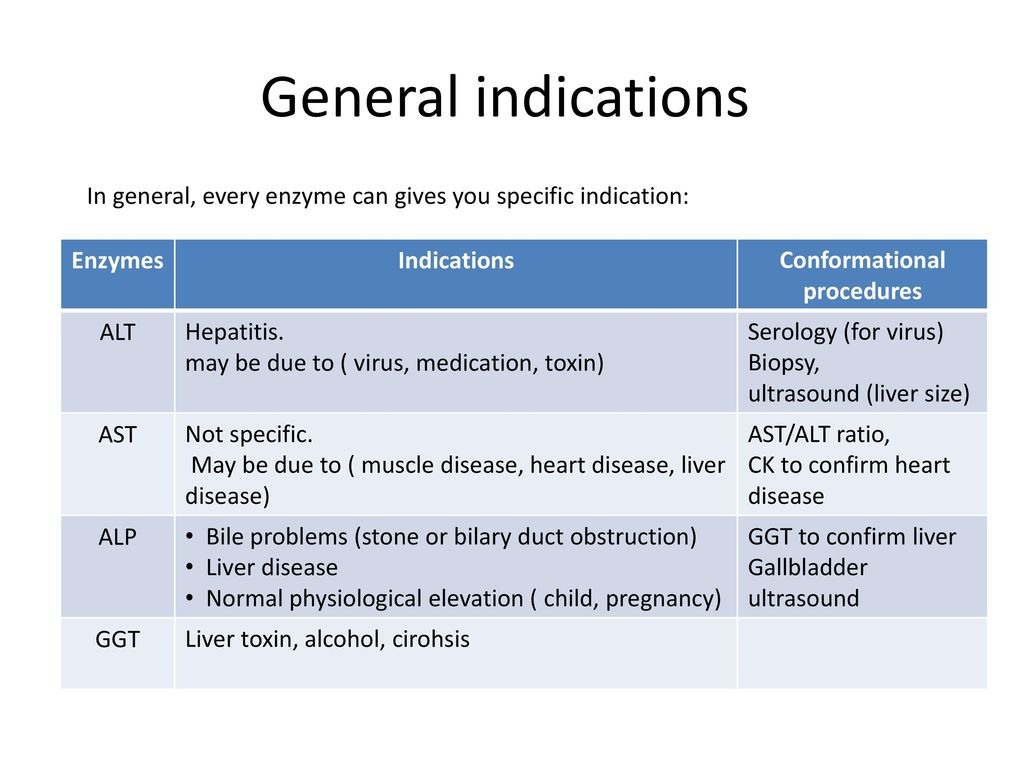 [PubMed] [Google Scholar]
[PubMed] [Google Scholar]
7. Tiribelli C, Ostrow JD. New concepts in bilirubin and jaundice: report of the Third International Bilirubin Workshop, April 6–8, 1995, Trieste, Italy. Hepatology. 1996;24:1296–1311. [PubMed] [Google Scholar]
8. Alvarez F, Berg PA, Bianchi FB. et al. International Autoimmune Hepatitis Group Report: review of criteria for diagnosis of autoimmune hepatitis. J Hepatol. 1999;31:929–38. [PubMed] [Google Scholar]
9. Daniel SP, Marshal MP. In: Schiff’s diseases of the liver. 10th edition. Eugene RS, Michel FS, Willis CM, editors. Vol. 1. Lippincott Williams and Wilkins; 2007. Laboratory test; pp. 19–54. [Google Scholar]
10. Khan S. Evaluation of hyperbilirubinemia in acute inflammation of appendix: A prospective study of 45 cases. Kathmandu Univ Med J. 2006;4:281–289. [PubMed] [Google Scholar]
11. Bacq Y, Zarka O, Brechot JF. et al. Liver function tests in normal pregnancy a prospective study of 103 pregnant women and 103 matched controls.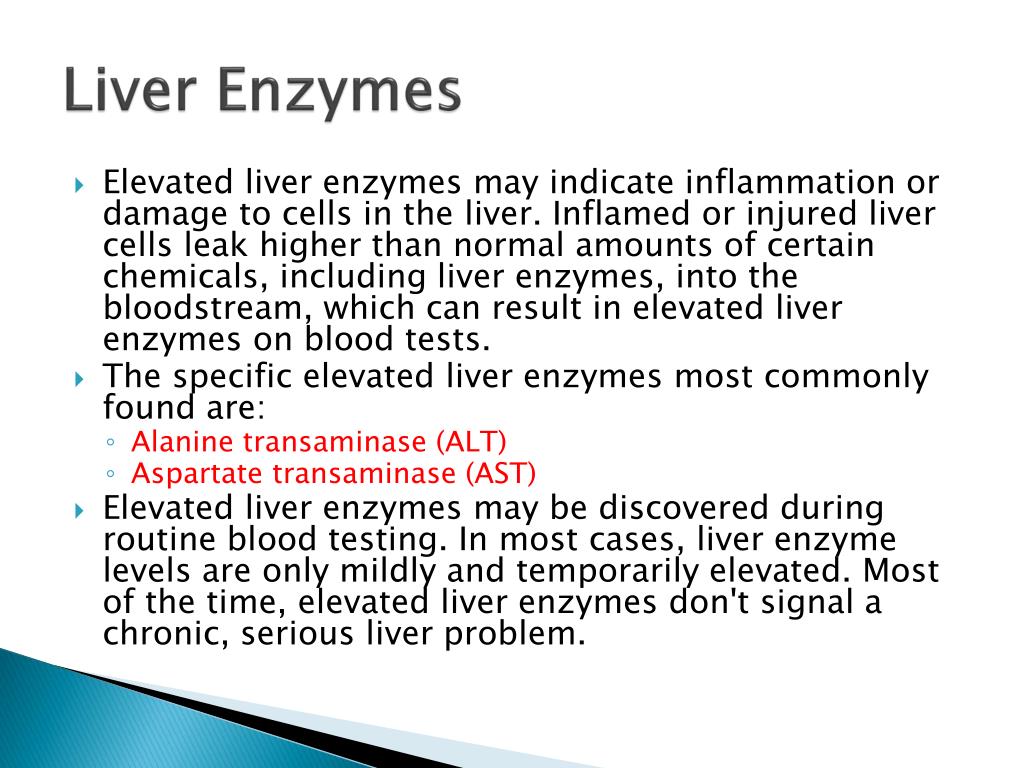 Hepatology. 1996;23:1030–1034. [PubMed] [Google Scholar]
Hepatology. 1996;23:1030–1034. [PubMed] [Google Scholar]
12. Perlstein TS, Pande RL, Creager MA. et al. Serum total bilirubin level prevalent stroke and stroke outcomes. NHANES 1999–2004. Am J Med. 2008;121:781–788. [PMC free article] [PubMed] [Google Scholar]
13. Kallei L, Hahn A, Roder VZ. Correlation between histological findings and serum transaminase values in chronic diseases of the liver. Acta Medica Scandinavika. 1964;175:49–56. [PubMed] [Google Scholar]
14. Marcellin P. Hepatitis C: the clinical spectrum of the disease. J Hepatol. 1999;31:9–16. [PubMed] [Google Scholar]
15. Sheth SG, Gordon FD, Chopra S. Nonalcoholic steatohepatitis. Ann Intern Med. 1997;126:137–145. [PubMed] [Google Scholar]
16. James D, Tania SB, Sara ET. et al. Alanine Aminotransferase Levels and Fatty Liver in Childhood Obesity: Associations with Insulin Resistance, Adiponectin, and Visceral Fat. J Clin Endocrinol Metab. 2006;91:4287–4294. [PubMed] [Google Scholar]
17. Tzong-Hsi L, Yung-Hsuan S, Wei-Shiung Y. et al. Bright Liver and Alanine Aminotransferase Are Associated with Metabolic Syndrome in Adults. Obesity Research. 2005;13:1238–1245. [PubMed] [Google Scholar]
et al. Bright Liver and Alanine Aminotransferase Are Associated with Metabolic Syndrome in Adults. Obesity Research. 2005;13:1238–1245. [PubMed] [Google Scholar]
18. Everhart JE, Ruhl CE. Coffee and caffeine consumption reduce the risk of elevated serum alanine aminotransferase activity in the United States. Gastroenterology. 2005;128:24–32. [PubMed] [Google Scholar]
19. Panteghini M, Falsetti F, Chiari E. et al. Determinaton of Aspartate aminotransferase isoenzymes in hepatic disease. Lab J Res Lab Med. 1983;10:515–519. [Google Scholar]
20. AGA Technical Review on the Evaluation of Liver Chemistry Tests. Gastroenterology. 2002;123:1367–1384. [PubMed] [Google Scholar]
21. Cohen JA, Kaplan MM. The SGOT/SGPT ratio – an indicator of alcoholic liver disease. Dig Dis Sci. 1979;24:835–838. [PubMed] [Google Scholar]
22. Diehl AM, Potter J, Boitnott J. et al. Relationship between pyridoxal 5′-phosphate deficiency and aminotransferase levels in alcoholic hepatitis. Gastroenterology. 1984;86:632–636. [PubMed] [Google Scholar]
Gastroenterology. 1984;86:632–636. [PubMed] [Google Scholar]
23. Edoardo Giannini, Domenico Risso, Federica Botta. et al. Validity and Clinical Utility of the Aspartate Aminotransferase–Alanine Aminotransferase Ratio in Assessing Disease Severity and Prognosis in Patients with Hepatitis C Virus–Related Chronic Liver Disease. Arch Intern Med. 2003;163:218–224. [PubMed] [Google Scholar]
24. Sayal SK, Gupta CM, Das AL. et al. A comparative study of liver function tests in patients of chronic liver disorders with and without cutaneous manifestations. Ind J Dermatol Venereol Leprol. 1997;63:15–19. [PubMed] [Google Scholar]
25. Giannini E, Botta F, Testa E. et al. The 1-year and 3-month prognostic utility of the AST/ALT ratio and model for end-stage liver disease score in patients with viral liver cirrhosis. Am J Gastroenterol. 2002;97:2855–2860. [PubMed] [Google Scholar]
26. Giannini E, Botta F, Fasoli A. et al. Progressive liver functional impairment is associated with an increase in AST/ALT ratio.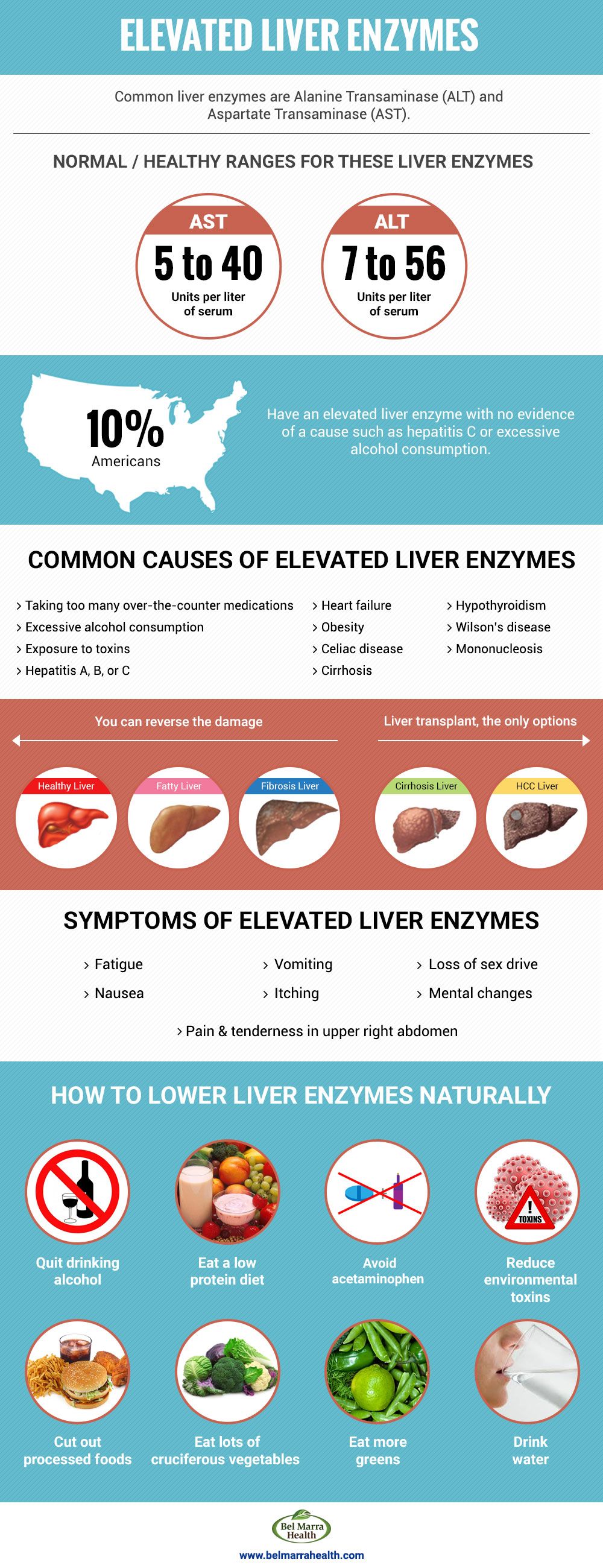 Dig Dis Sci. 1999;44:1249–1253. [PubMed] [Google Scholar]
Dig Dis Sci. 1999;44:1249–1253. [PubMed] [Google Scholar]
27. Sorbi D, Boynton J, Lindor KD. The ratio of aspartate aminotransferase to alanine aminotransferase: potential value in differentiating nonalcoholic steatohepatitis from alcoholic liver disease. Am J Gastroenterol. 1999;94:1018–1022. [PubMed] [Google Scholar]
28. Christoph E, Olivia S, Wolfgang S. Diagnostic criteria for acute liver failure due to Wilson disease. World J Gastroenterol. 2007;13:1711–1714. [PMC free article] [PubMed] [Google Scholar]
29. Bayraktar M, Van T. Abnormalities in measures of liver function and injury in thyroid disorders. Hepatogastroenterology. 1997;44:1614–1618. [PubMed] [Google Scholar]
30. Rosalki SB, Mcintyre N. 2nd ed. New York: Oxford university press; 1999. Biochemical investigations in the management of liver disease; pp. 503–521. Oxford textbook of clinical hepatology. [Google Scholar]
31. Simko V. Alkaline phosphatases in biology and medicine. Dig Dis. 1991;9:189–193. [PubMed] [Google Scholar]
[PubMed] [Google Scholar]
32. Ilham MA, Cookson A, Dheerendra S. et al. Idiopathic severe elevation of serum alkaline phosphatase following adult renal transplantation: case reports. Transplant Proc. 2008;40:2059–2061. [PubMed] [Google Scholar]
33. Cheung BM, Ong KL, Wong LY. Elevated serum alkaline phosphatase and peripheral arterial disease in the United States National Health and Nutrition Examination Survey 1999–2004. Int J Cardiol. 2009;135:156–161. [PubMed] [Google Scholar]
34. Giannini E, Botta F, Fasoli A. et al. Increased levels of gamma GGT suggest the presence of bile duct lesions in patients with chronic hepatitis C: absence of influence of HCV genotype, HCV-RNA serum levels, and HGV infection on this histological damage. Dig Dis Sci. 2001;46:524–529. [PubMed] [Google Scholar]
35. Wu A, Slavin G, Levi AJ. Elevated serum gamma-glutamyl-transferase (transpeptidase) and histological liver damage in alcoholism. Am J Gastroenterology. 1976;65:318–323. [PubMed] [Google Scholar]
36. Sugiura M, Nakamura M, Ikoma Y. et al. High serum carotenoids are inversely associated with serum gamma-glutamyl transferase in alcohol drinkers within normal liver function. Journal of epidemiology. 2005;15:180–186. [PMC free article] [PubMed] [Google Scholar]
Sugiura M, Nakamura M, Ikoma Y. et al. High serum carotenoids are inversely associated with serum gamma-glutamyl transferase in alcohol drinkers within normal liver function. Journal of epidemiology. 2005;15:180–186. [PMC free article] [PubMed] [Google Scholar]
37. McCullough AJ. Update on nonalcoholic fatty liver disease. J Clin Gastroenterol. 2002;34:255–262. [PubMed] [Google Scholar]
38. Martin JV, Hague RV, Martin PJ. et al. The association between serum triglycerides and gamma glutamyl transpeptidase activity in diabetes mellitus. Clin Biochem. 1976;9:208–211. [PubMed] [Google Scholar]
39. Smith K, Varon HH, Race GJ. et al. Serum 5′-nucleotidase in patients with tumour in the liver. Cancer. 1966;17:1281–1285. [PubMed] [Google Scholar]
40. Pratibha K, Usha A, Rajni A. Serum adenosine deaminase, 5′ nucleotidase and malondialdehyde in acute infective hepatitis. Ind J Clin Biochem. 2004;19:128–131. [PMC free article] [PubMed] [Google Scholar]
41. Miya F, Shigeru A, Fumitada H. et al. 5′-nucleotidase activities in sera and liver tissues of viral hepatitis patients. Journal of Gastroenterology. 1990;25:199–205. [PubMed] [Google Scholar]
et al. 5′-nucleotidase activities in sera and liver tissues of viral hepatitis patients. Journal of Gastroenterology. 1990;25:199–205. [PubMed] [Google Scholar]
42. LaRusso NF, Summerskill WH, McCall JT. et al. Abnormalities of chemical tests for copper metabolism in chronic active liver disease: differentiation from Wilson’s disease. Gastroenterology. 1976;70:653–655. [PubMed] [Google Scholar]
43. Zhifang Xie, Hai Zhang, Wenwei Tsai. Zinc finger protein ZBTB20 is a key repressor of alpha-fetoprotein gene transcription in liver. PNAS. 2008;105:10859–10864. [PMC free article] [PubMed] [Google Scholar]
44. Stewart Sell. Alpha-Fetoprotein, Stem Cells and Cancer How Study of the Production of Alpha-Fetoprotein during Chemical Hepatocarcinogenesis Led to Reaffirmation of the Stem Cell Theory of Cancer. Tumor Biol. 2008;29:161–180. [PMC free article] [PubMed] [Google Scholar]
45. Grizzi F, Franceschini B, Hamrick C. et al. Usefulness of cancer-testis antigens as biomarkers for the diagnosis and treatment of hepatocellular carcinoma.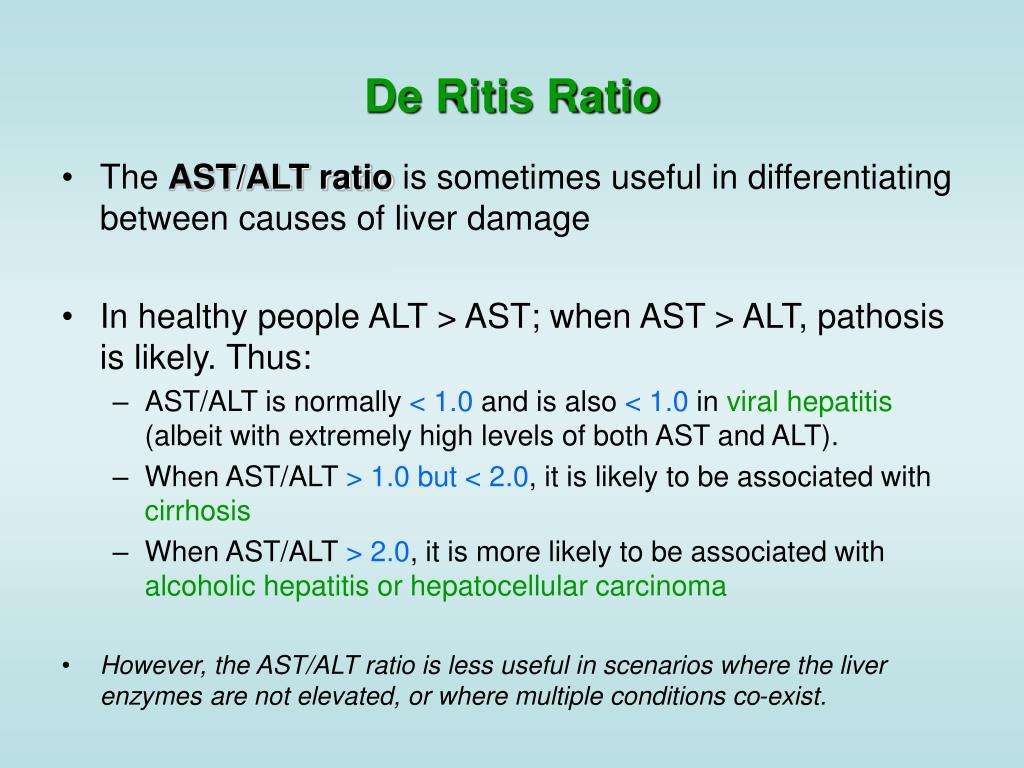 J Transl Med. 2007;5:3. [PMC free article] [PubMed] [Google Scholar]
J Transl Med. 2007;5:3. [PMC free article] [PubMed] [Google Scholar]
46. Males S, Gad RR, Esmat G. et al. Serum alpha-foetoprotein level predicts treatment outcome in chronic hepatitis C. Antivir Ther. 2007;12:797–803. [PubMed] [Google Scholar]
47. Zhou L, Liu J, Luo F. Serum tumor markers for detection of hepatocellular carcinoma. World J Gastroenterol. 2006;12:1175–1181. [PMC free article] [PubMed] [Google Scholar]
48. Hagiwara S, Kudo M, Kawasaki T, Nagashima M. et al. Prognostic factors for portal venous invasion in patients with hepatocellular carcinoma. J Gastroenterol. 2006;41:1214–1219. [PubMed] [Google Scholar]
49. Asmaa IG, Shahid AK, Edward LS. Diagnosis of hepatocellular carcinoma. World J Gastroenterol. 2009;15:1301–1314. [PMC free article] [PubMed] [Google Scholar]
50. Gordon CS, Angela M. Second-Trimester Maternal Serum Levels of Alpha-Fetoprotein and the Subsequent Risk of Sudden Infant Death Syndrome. N Engl J Med. 2004;351:978–986. [PubMed] [Google Scholar]
what you need to know about your liver health
Contents
- 1 Liver criteria
- 1.
 1 Liver criteria: important information about the condition of a vital organ
1 Liver criteria: important information about the condition of a vital organ - 1.2 What are liver criteria and why they are important for health
- 1.3 Functions of the liver and its effects on the body
- 1.4 Basic indicators of the state of the liver
- 1.5 Determination of liver criteria through tests and examinations
- 1.6 Normal values of liver criteria and their interpretation
- 1.7 Influence of liver criteria on health and disease prevention
- 1.8 Dangerous deviations of liver criteria and their possible consequences
- 1.9 Factors affecting liver criteria and how to normalize them
- 1.10 Recommendations for monitoring liver criteria and preventing liver disease
- 1.11 Importance of regular medical examination for monitoring liver criteria
- 1.12 Related videos:
- 1.13 Q&A:
- 1.13.0.1 What symptoms may indicate liver problems?
- 1.13.0.2 What tests will help to find out about the condition of the liver?
- 1.
Liver criteria (or liver chemistry) are used to assess liver function and identify possible pathologies. Learn what indicators are included in the liver criteria and how to interpret them for liver diagnosis and monitoring.
Learn what indicators are included in the liver criteria and how to interpret them for liver diagnosis and monitoring.
The liver is one of the most important organs in our body, responsible for many vital functions. It plays an important role in digestion, the processing and disposal of harmful substances, and the production of important proteins and hormones.
However, the liver is also a very vulnerable organ and can be damaged by various factors such as viruses, alcohol, improper diet and drugs. Therefore, it is important to know about the condition of your liver and the features of its work.
There are various methods and criteria to determine how healthy your liver is. One of these criteria is the level of alanine aminotransferase (ALT) in the blood. High ALT levels can be a sign of inflammation or damage to the liver.
It is important to pay attention to your liver and monitor its condition in order to prevent serious consequences. Knowing about liver criteria will help you see your doctor in a timely manner and take the necessary steps to keep your liver healthy.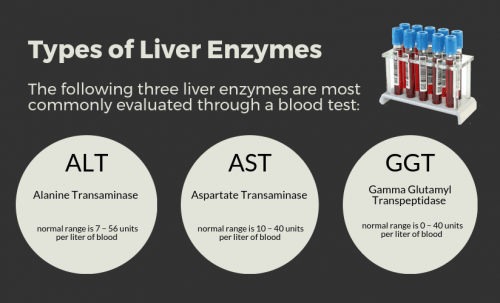
Liver Criteria: Important information about the condition of a vital organ
The liver is one of the most important organs in our body, with many functions. It plays the role of a filter, cleansing the blood of toxins, is involved in metabolism, synthesizes bile and helps in the digestion of food. The liver also processes drugs and stores vitamins and minerals. It is important to know about the current state of the liver in order to take timely measures to maintain it and prevent the development of diseases.
The most reliable and accurate method for diagnosing liver diseases is a biopsy – taking a small sample of tissue for examination under a microscope. However, this method is not always possible or desirable due to its invasiveness and risks. Therefore, liver criteria based on blood tests and other biochemical parameters can be used to initially assess the state of the liver.
It is important to understand that liver criteria are only indicators and may not fully reflect the condition of the liver. They can be increased not only in liver diseases, but also in other pathologies of the body. Therefore, in case of detection of abnormalities in the liver criteria, you should always consult a doctor for further examination and accurate diagnosis.
They can be increased not only in liver diseases, but also in other pathologies of the body. Therefore, in case of detection of abnormalities in the liver criteria, you should always consult a doctor for further examination and accurate diagnosis.
What are liver criteria and why are they important for health
Liver criteria are a set of parameters that evaluate the state of the liver and determine the presence or extent of liver disease. These criteria include parameters such as liver enzymes such as alanine aminotransferase (ALT) and aspartate aminotransferase (AST), total and direct bilirubin levels, and albumin and globulin levels.
Liver criteria identify the presence of liver disease in the early stages, when symptoms are not yet apparent. They can also be used to monitor the effectiveness of treatment and estimate disease prevalence. Regular testing for liver criteria allows you to identify possible problems and take steps to prevent or treat them.
Prevention of liver disease includes a healthy lifestyle, including proper nutrition, moderate alcohol consumption, smoking cessation, regular exercise, and avoidance of exposure to toxic substances. It is also important to undergo regular medical examinations and tests, including checking liver criteria, which will allow timely detection and prevention of liver diseases.
It is also important to undergo regular medical examinations and tests, including checking liver criteria, which will allow timely detection and prevention of liver diseases.
The functions of the liver and its effect on the body
The liver is one of the key organs in our body, performing a large number of important functions. Its influence on the work of the whole organism is very great.
One of the main functions of the liver is the processing of food. After digestion, food enters the liver, where it is decomposed into simpler components. Enzymes are produced here that are involved in the breakdown of fats, proteins and carbohydrates, as well as in the synthesis of glucose and glycogen.
The liver is also involved in the regulation of glucose levels in the body. It maintains a normal concentration of sugar in the blood, storing it in the form of glycogen and, conversely, releasing it when its level decreases. This is especially important for maintaining the energy balance in the body.
In addition, the liver is involved in cleansing the body of toxins and slag substances . It filters the blood, removes from it harmful metabolic products, medicines, alcohol and other substances that are incompatible with the vital activity of the body.
The liver is also involved in the formation of bile, which plays an important role in digestion. Bile not only breaks down fats, but also helps to absorb fat-soluble vitamins. It is secreted from the liver into the intestines and is involved in the process of digestion.
By removing toxins and waste products from the liver, synthesizing substances necessary for metabolism and absorption of nutrients, the liver plays a key role in the overall health of the body. Proper nutrition, regular fluid intake, and the absence of organ overload are of great importance so that the liver continues to perform its functions at the proper level.
Liver Health Indicators
Alanine aminotransferase (ALT) is an enzyme found in the liver that helps it process proteins in the body. A high ALT level may indicate liver problems such as hepatitis or cirrhosis.
A high ALT level may indicate liver problems such as hepatitis or cirrhosis.
Aspartate aminotransferase (AST) is another enzyme found in the liver. Elevated AST levels can also be a sign of liver damage, such as hepatitis or cirrhosis.
Gamma-glutamyltransferase (GGT) is an enzyme found in the liver, gallbladder and other organs. Elevated GGT levels may indicate problems with the liver or gallbladder, such as gallstones or alcoholic liver disease.
Albumin is a protein produced in the liver. Low albumin levels can be a sign of liver failure or other liver problems.
Total bilirubin is a pigment produced when red blood cells are broken down and the liver plays a role in its processing. High levels of bilirubin may indicate liver problems such as jaundice or blocked bile ducts.
In addition, there are other indicators such as alkaline phosphatase , alpha-fetoprotein and prothrombin time , which can be used to assess liver function and identify problematic situations.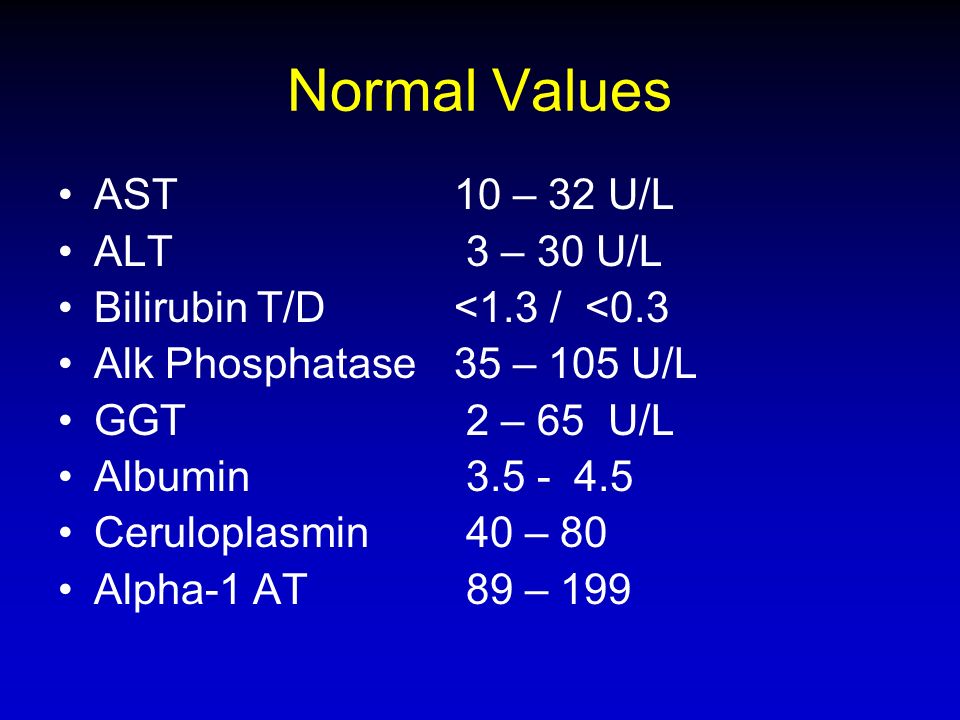 Often these indicators, together with general criteria, help in determining the condition of the liver and identifying any abnormalities in its work.
Often these indicators, together with general criteria, help in determining the condition of the liver and identifying any abnormalities in its work.
It is important to note that liver health scores can vary depending on many factors, including age, sex, family history, presence of other diseases, and use of certain medications. Therefore, if you have found abnormalities in your liver parameters, it is recommended to consult a doctor for additional analysis and consultation.
Determination of liver criteria through tests and examinations
Various tests and examinations are carried out to determine the condition of the liver and identify liver criteria. They allow you to evaluate the functionality of the body, identify the presence of possible diseases and determine the degree of their development.
Specialists may also refer to ultrasonography (ultrasound) of the liver to determine liver criteria. With the help of ultrasound, you can assess the size and shape of the liver, identify changes in the structure and the presence of tumors, as well as assess the condition of the biliary tract.
For a more accurate picture, sometimes more complex tests such as magnetic resonance imaging (MRI) or computed tomography (CT) are required. These methods provide detailed images of the liver and surrounding tissues, as well as detect the presence of tumors, cysts, or other formations.
It is important to note that the determination of hepatic criteria through tests and examinations should be carried out under the guidance of qualified specialists such as gastroenterologists or hepatologists. They will be able to evaluate the results and make the correct diagnosis, as well as prescribe the appropriate treatment, if necessary.
Normal values of liver criteria and their interpretation
Many complex biochemical processes take place in the liver, and its condition can be recognized by various indicators, which are called liver criteria. Normal values of these criteria are an important indicator of liver health.
Another important hepatic criterion is Aspartate aminotransferase (AST).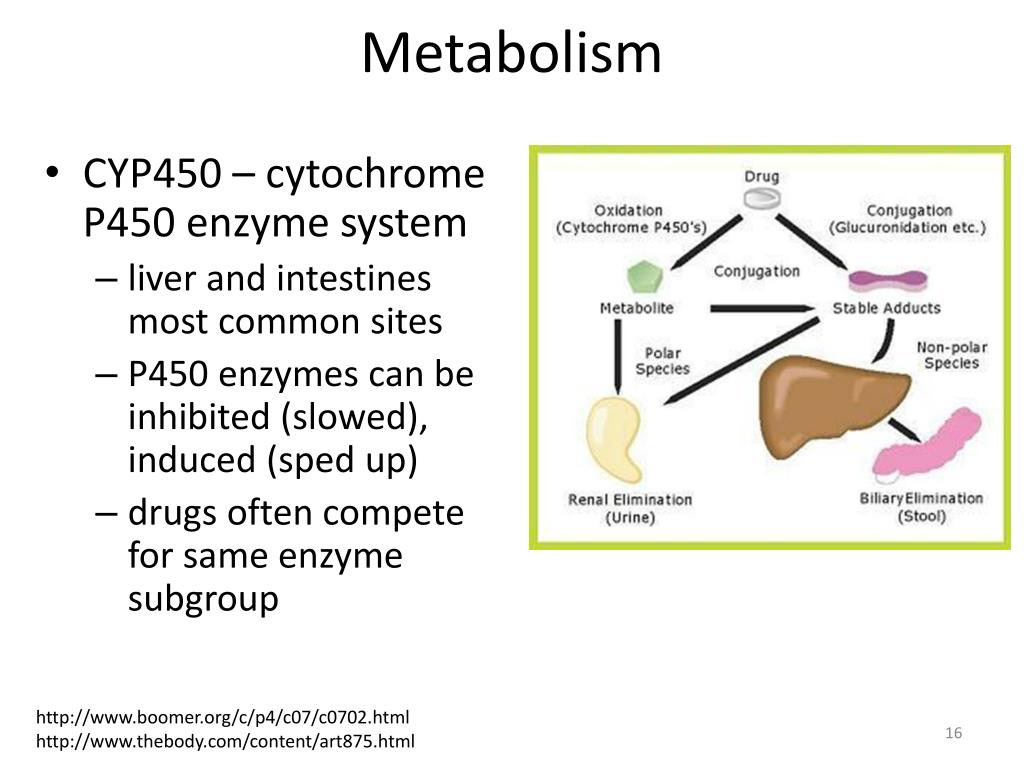 Normal AST values also depend on gender and age. In men, they are up to 40 units / l, in women – up to 35 units / l. An increase in AST levels may be associated with various pathologies, including liver diseases.
Normal AST values also depend on gender and age. In men, they are up to 40 units / l, in women – up to 35 units / l. An increase in AST levels may be associated with various pathologies, including liver diseases.
Creatinine is another indicator that helps assess liver function. The normal value of this indicator lies in the range from 44 to 97 micromol / l for men and from 44 to 80 micromol / l for women. An increase in creatinine levels may indicate a malfunction of the kidneys, which are closely related to the liver.
The concentration of bilirubin in the blood can also serve as an indicator of the state of the liver. Total bilirubin has a normal value of up to 20.5 µmol/L. In the case of an increase in the level of bilirubin, icteric changes occur, which indicate a malfunction of the liver and a violation of the metabolism of bile pigments.
Other important hepatic criteria include total protein, albumin, ammonia, and some other enzymes. The results of the analyzes of these indicators help to diagnose liver diseases and assess its functional state.
Influence of liver criteria on health and disease prevention
The liver plays an important role in the body with many functions, including blood purification, bile production and metabolism. The health of the liver directly affects the general condition of the body, so it is important to monitor the liver criteria and take measures to normalize them.
One of the main indicators of liver function is the level of alanine and aspartate transaminase (ALT and AST) in the blood. An increase in these enzymes may indicate liver damage, which can be caused by various causes, such as viral infections, alcohol or drug damage, fatty liver, and others. Regular monitoring of ALT and AST levels will help identify possible problems and start treatment in a timely manner.
Another important indicator of the state of the liver is the level of total protein and its fractions (albumin and globulin). With a reduced level of total protein, albumin, or an increased level of globulins, the synthetic function of the liver can be impaired.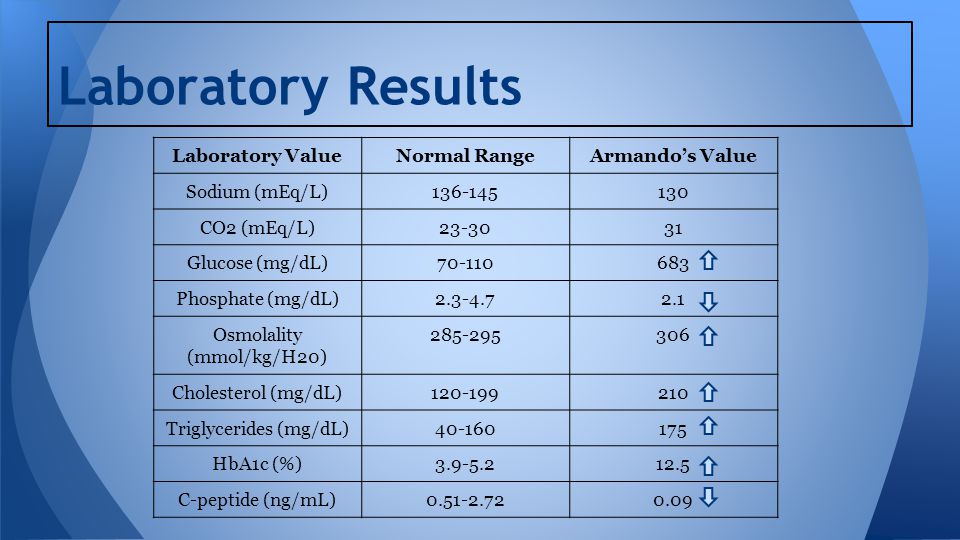 This may be due to nutritional deficiencies, liver disease, or other factors. Regular analysis of total protein and its fractions will help monitor liver function and take corrective measures if necessary.
This may be due to nutritional deficiencies, liver disease, or other factors. Regular analysis of total protein and its fractions will help monitor liver function and take corrective measures if necessary.
Prevention of liver diseases includes the following measures: maintaining a healthy lifestyle, avoiding alcohol and smoking, proper nutrition, physical activity, regular preventive examinations by a doctor and adherence to vaccination recommendations. It is also important to avoid contact with toxic substances, take medicines only when prescribed by a doctor, and avoid self-medication. Regular monitoring of liver criteria and timely visits to a doctor will help identify problems in the liver in the early stages and prevent the development of serious diseases.
Dangerous deviations of liver criteria and their possible consequences
The health of the liver plays an important role in the overall health of the body. It performs many functions, including blood filtration, bile production, and metabolism. However, various factors can cause abnormal liver function, which can lead to serious consequences.
However, various factors can cause abnormal liver function, which can lead to serious consequences.
One of the main indicators of liver health is the level of alanine aminotransferase (ALT) and aspartate aminotransferase (AST) in the blood. Elevated levels of these enzymes may indicate inflammation or damage to the liver. If such deviations are not detected and eliminated in a timely manner, this can lead to the development of cirrhosis of the liver or even cancer.
In addition, elevated levels of bilirubin may also indicate problems with the liver. Bilirubin is a pigment that results from the breakdown of red blood cells in the liver. Elevated levels of this substance may be associated with impaired liver function or obstruction of the biliary tract. In such cases, the person may experience icteric discoloration of the skin and eyes, as well as other symptoms of liver failure.
In addition to these indicators, elevated levels of uric acid in the blood can also indicate problems with the liver. This may be due to metabolic disorders or hepatitis. High levels of uric acid can lead to the development of diseases such as gout.
This may be due to metabolic disorders or hepatitis. High levels of uric acid can lead to the development of diseases such as gout.
Thus, regular monitoring of hepatic criteria is an important measure for assessing the condition of the liver and identifying possible abnormalities. If suspicious indicators are found, it is necessary to consult a doctor for further examination and treatment in order to prevent serious health consequences.
Factors affecting hepatic criteria and ways to normalize them
The liver is one of the most important organs of the human body, performing many functions. However, various factors can affect its performance and lead to a violation of hepatic criteria. One of the most common factors is malnutrition. Overeating fatty and fried foods, too much alcohol and sweets can cause liver dysfunction and increase liver criteria.
Diseases such as hepatitis, cirrhosis, and fatty degeneration can also affect liver performance. Inflammation of the liver caused by infection or other factors can lead to impaired organ function and increased hepatic criteria.
Inflammation of the liver caused by infection or other factors can lead to impaired organ function and increased hepatic criteria.
One way to normalize liver criteria is proper nutrition. Limiting fatty, fried, and sugary foods can help the liver recover and lower liver criteria.
It should be noted that physical activity and moderate exercise can also have a positive effect on the liver and contribute to its normalization. Regular exercise, walking and other forms of physical activity help strengthen the immune system and improve the general condition of the body, including liver function.
Guidelines for monitoring liver criteria and preventing liver disease
Liver health plays an important role in the overall health of the body, so monitoring its functions and preventing diseases is an integral part of a healthy lifestyle. There are several recommendations to help you keep your liver healthy.
It is important to keep an eye on your diet and stick to a healthy diet.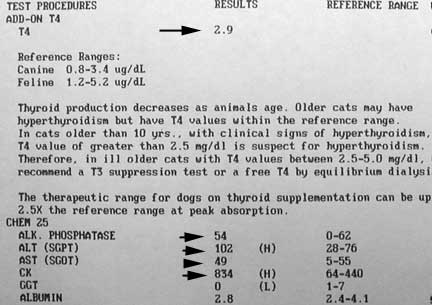 Eating a large amount of fatty, fried and spicy foods can adversely affect the functioning of the liver and lead to the development of diseases. At the same time, it is necessary to increase the consumption of fruits, vegetables, greens, cereals and dairy products, which are rich in vitamins and minerals that positively affect the liver.
Eating a large amount of fatty, fried and spicy foods can adversely affect the functioning of the liver and lead to the development of diseases. At the same time, it is necessary to increase the consumption of fruits, vegetables, greens, cereals and dairy products, which are rich in vitamins and minerals that positively affect the liver.
It is also important to consume alcohol in moderation to maintain a healthy liver. The systematic use of alcohol can adversely affect liver function, lead to cirrhosis and other serious diseases. It is better to stop drinking alcohol or reduce its level to a minimum.
The third recommendation relates to physical activity. Regular physical activity will help maintain a normal metabolism, strengthen the immune system and improve liver function. It is recommended to play sports or simply increase physical activity by doing morning exercises or walking in the fresh air.
Equally important is the correct use of medicines. Medicines can have a negative effect on the liver, especially when taken for a long time or in excess of doses. You should always strictly follow the instructions for use and consult your doctor if in doubt or side effects.
You should always strictly follow the instructions for use and consult your doctor if in doubt or side effects.
In conclusion, the control of liver criteria and the prevention of liver disease are important components of a healthy lifestyle. Proper nutrition, moderate alcohol consumption, and regular exercise will help maintain a healthy liver and overall well-being.
The importance of regular medical check-ups to control liver criteria
The liver is one of the most important organs in our body, responsible for purifying the blood, disposing of harmful substances and synthesizing substances necessary for the body to function. In this regard, monitoring the condition of the liver is an integral part of the medical examination.
Liver criteria reflect the functioning of the liver and allow detection of liver disorders at the earliest stages. This requires regular medical examinations, including blood tests for enzyme levels and other indicators related to liver function.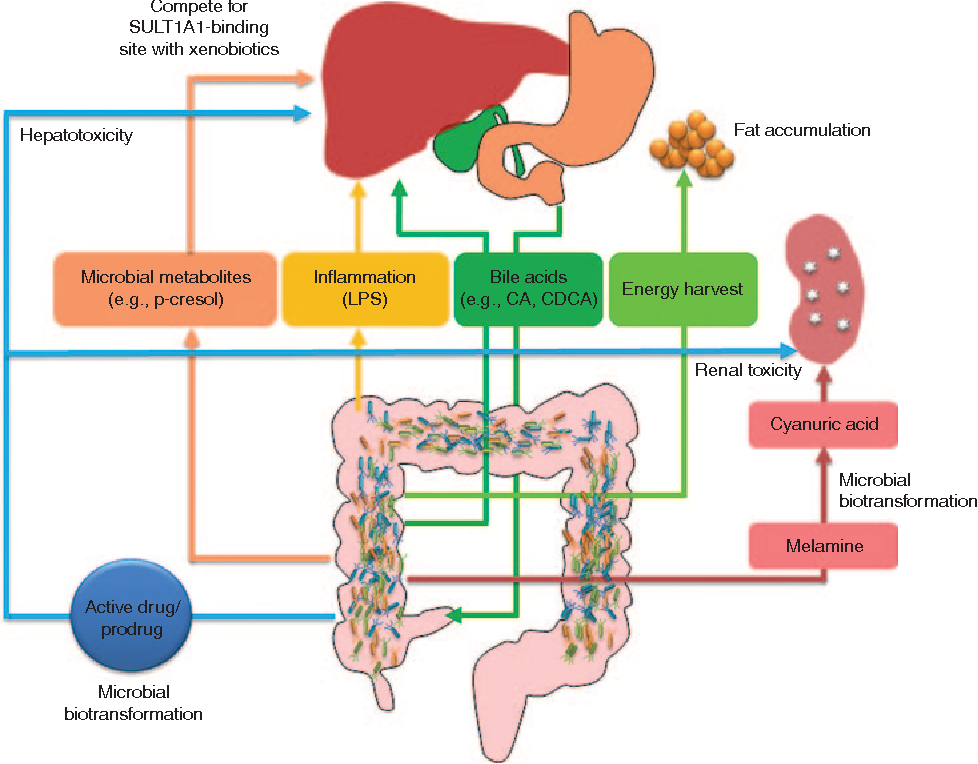
One of the important indicators is the level of alanine aminotransferase (ALT) and aspartate aminotransferase (AST). An increase in these enzymes may indicate the presence of inflammation or damage to the liver. In addition, examinations allow you to assess the level of bilirubin, which is associated with the formation and excretion of bile, and may indicate abnormalities in the liver.
Regular medical examination allows not only to identify problems with the liver, but also to take timely measures to correct them. If abnormalities are found, the doctor may prescribe the necessary treatment, recommend diet and lifestyle changes to maintain the functionality and health of the liver. In addition, regular monitoring of indicators allows you to track the effectiveness of the treatment and adjust it if necessary.
Thus, regular medical examination and monitoring of liver criteria are an important part of a healthy lifestyle. They allow you to detect liver dysfunction at an early stage and prevent the development of serious diseases. Therefore, it is necessary not to forget about your health and regularly consult a doctor for a preventive examination.
Therefore, it is necessary not to forget about your health and regularly consult a doctor for a preventive examination.
Related videos:
Q&A:
What symptoms may indicate liver problems?
Symptoms of liver problems may include jaundice, liver enlargement, alcohol consumption, loss of appetite, fatigue, and depression.
What tests will help to find out about the condition of the liver?
Common liver tests include alanine aminotransferase (ALT), aspartate aminotransferase (AST), bilirubin, and hepatitis viruses.
what is it and how does it affect health?
Contents
- 1 Alt in the biochemical analysis of blood: value, norm and possible deviations
- 1.1 Alt in the biochemical analysis of blood: definition and norms
- 1.
 1.1 What is ALT?
1.1 What is ALT? - 1.1.2 Norms of ALT in the blood
- 1.
- 1.2 Video on the topic:
- 1.3 What does an elevated level of ALT (alanine aminotransferase) mean in a biochemical blood test?
- 1.4 Causes of an increase in Alt in a biochemical blood test
- 1.5 Q&A:
- 1.5.0.1 What is ALT in a biochemical blood test?
- 1.5.0.2 What are normal ALT values?
- 1.5.0.3 What diseases can increase the level of ALT in the blood?
- 1.5.0.4 What does elevated blood ALT mean?
- 1.5.0.5 What should I do if I have high blood ALT?
- 1.5.0.6 Can ALT levels be low?
- 1.6 How to determine the increase in the level of Alt in a biochemical blood test?
- 1.7 Symptoms of elevated Alt levels in a biochemical blood test
- 1.8 How is Alt level related to diseases of the liver and biliary tract?
- 1.9 The role of Alt in the diagnosis of diseases of the heart and muscles
- 1.
 10 How to reduce the level of Alt in the biochemical analysis of blood?
10 How to reduce the level of Alt in the biochemical analysis of blood? - 1.11 What to do if the level of Alt in the blood is high
- 1.12 Alt and the use of certain drugs
- 1.12.1 Alt and antibiotics
- 1.12.2 Alt and antivirals
- 1.12.3 Alt and antifungals
- 1.12.4 Alt and analgesics
- 1.12.5 Alt and cholesterol-lowering drugs
- 1.1 Alt in the biochemical analysis of blood: definition and norms
Alt – an enzyme that is found in the cells of the human liver and heart. Its level in the blood is measured in a biochemical analysis, and an increase in this indicator may indicate problems with the liver or heart. In our article, you will find detailed information about what ALT is and how its level is related to human health.
Medical blood tests are one of the most effective ways to diagnose various diseases and disorders occurring in the body. One of the main indicators that allow you to determine the state of human health is ALT.
ALT is an alanine aminotransferase, an enzyme that is involved in the process of amino acid metabolism in the body. It is found in the tissues of the liver, heart, muscles and other tissues. When these tissues are destroyed, ALT enters the bloodstream, which makes it possible to determine the level of this enzyme by a biochemical blood test.
It is found in the tissues of the liver, heart, muscles and other tissues. When these tissues are destroyed, ALT enters the bloodstream, which makes it possible to determine the level of this enzyme by a biochemical blood test.
ALT levels affect the general condition of the body, so its level can be an indicator of various diseases, such as hepatitis, liver cirrhosis, heart attack, myopathy and other diseases. ALT can also increase with certain medications or as a result of increased exercise.
ALT in a biochemical blood test: definition and norms
What is ALT?
Alanine aminotransferase (ALT) is an enzyme found in liver cells and other organs, including the heart and muscles. When these organs are affected, ALT is released into the blood, which can be detected using a biochemical blood test. A high level of ALT in the blood can indicate the presence of diseases of the liver, heart and other organs.
ALT blood levels
Normal blood ALT values differ by sex and age.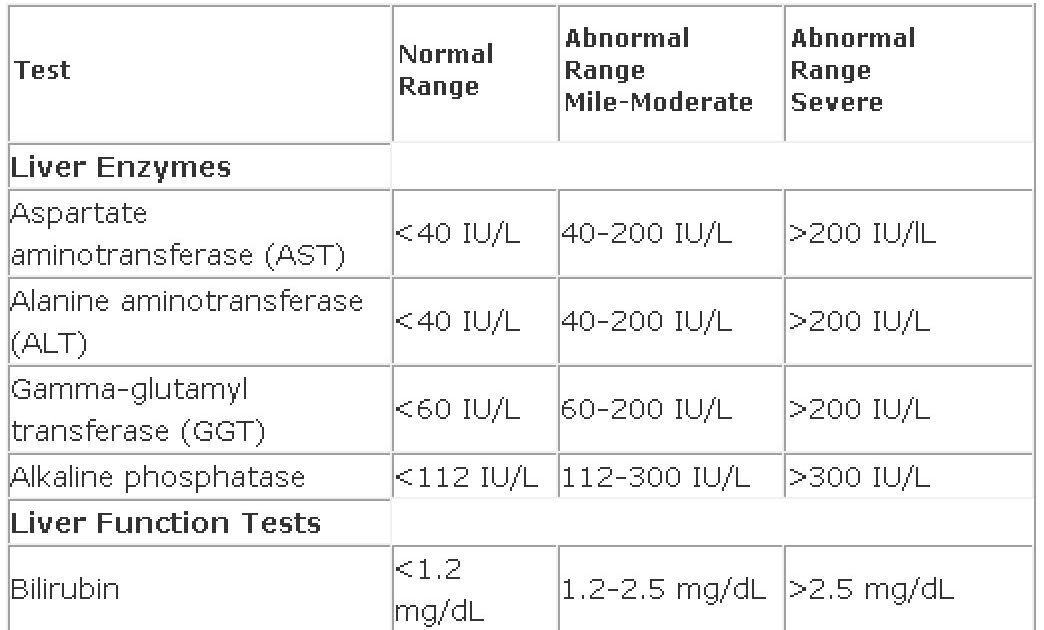 ALT levels can also vary depending on the laboratory that performs the analysis. In general, the average normal range for adult men is 10 to 40 units per liter of blood, and for women, 7 to 35 units per liter of blood. ALT levels can be elevated in some diseases, such as hepatitis, cirrhosis, myocardial infarction, and other diseases.
ALT levels can also vary depending on the laboratory that performs the analysis. In general, the average normal range for adult men is 10 to 40 units per liter of blood, and for women, 7 to 35 units per liter of blood. ALT levels can be elevated in some diseases, such as hepatitis, cirrhosis, myocardial infarction, and other diseases.
Normal blood ALT levels by age Age group ALT norm, units/l
| Newborns | 10-50 |
| Babies under 12 months | 13-45 |
| Children from 1 to 12 years old | 10-50 |
| Adolescents from 12 to 17 years old | More than 25, but less than 75 |
If ALT levels are higher than normal, this may indicate the presence of diseases of the liver, heart or other organs. However, a high ALT level does not always indicate a serious problem. For example, drinking alcohol, certain medications, and even exercise can temporarily increase blood levels of ALT.
Related videos:
What does an elevated level of Alt (alanine aminotransferase) mean in a biochemical blood test?
Alanine aminotransferase (ALT) is an enzyme found in body tissues, especially the liver and heart. An elevated ALT level in a biochemical blood test indicates damage or disease to these organs.
Alt levels can be elevated in diseases such as hepatitis, liver cirrhosis, liver cancer, cholelithiasis, alcohol and drug intoxication. Also quite often, Alt is elevated with heart disease and problems with the gallbladder.
Manifestations of only a slight increase in Alt do not have specific symptoms, there may be a feeling of heaviness and pain in the right upper abdomen or slight discomfort. However, if you doubt your state of health, in any case, consult a doctor, he will tell you about further actions.
However, if you doubt your state of health, in any case, consult a doctor, he will tell you about further actions.
Normative values of the level of Alt in the biochemical analysis of blood: Half Norm
| Men | 10-40 U/L |
| Women | 7-35 U/L |
Causes of elevated Alt in blood chemistry
Altastosis is a condition that is associated with elevated levels of Alt in a person’s blood. It is an indicator of the presence of pathological processes in the liver and other tissues of the body.
Increased levels of Alt in the blood can be observed in diseases such as:
- Hepatitis. This disease is the most common cause of high blood ALT. Hepatitis A, B, and C are the most common types of hepatitis that cause elevated ALT levels.
- Cirrhosis of the liver. This disease is characterized by the replacement of hepatic tissue with connective tissue, which causes a decrease in liver function.

- Alcoholic liver disease. Long-term alcohol use can cause liver damage and increase Alt.
- Some drugs. Some medications can cause high blood levels of Alt.
If the level of Alt is elevated, this may indicate the presence of pathological processes in the body. It is necessary to consult a doctor to identify the causes and take measures to treat the disease.
Q&A:
What is ALT in a biochemical blood test?
ALT (alanine aminotransferase) is an enzyme found in the cells of the liver and some other organs. When these cells are damaged, ALT enters the bloodstream, which can be determined in a biochemical blood test.
What ALT values are considered normal?
The level of ALT in the blood depends on sex and age. In men, the norm is 10-40 units / l, in women – 7-35 units / l. But keep in mind that some drugs and diseases can affect the performance.
What diseases can increase the level of ALT in the blood?
Blood levels of ALT may be elevated in liver diseases such as hepatitis, cirrhosis, liver cancer, as well as heart disease, muscular dystrophy and other disorders of cellular metabolism.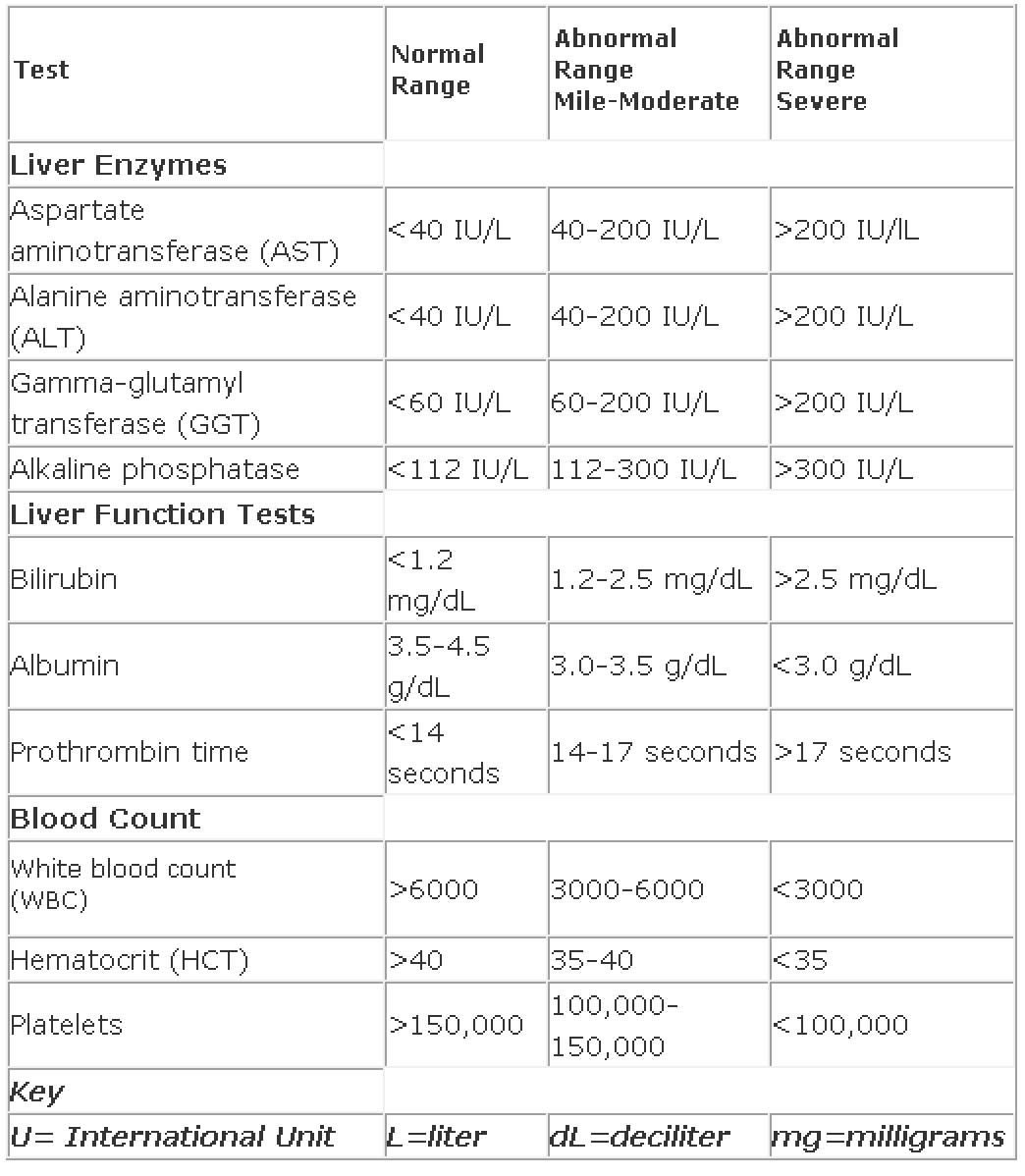
What does elevated blood ALT mean?
Elevated blood levels of ALT indicate damage to the cells of the organs that contain this enzyme. The cause may be diseases of the liver, heart and other organs, as well as medication or alcohol.
What should I do if I have high blood ALT levels?
If the level of ALT in the blood is elevated, it is necessary to consult a doctor to clarify the cause. The doctor may prescribe additional tests to identify the disease, as well as recommendations for treatment and lifestyle changes.
Can ALT levels be low?
Yes, ALT levels may be below normal, but this is usually not a health problem. Low levels of ALT may be due to low activity of this enzyme, which can occur in acute or chronic liver failure or genetic disorders.
How to determine the increase in the level of Alt in a biochemical blood test?
Alt is an enzyme found in liver cells and some other body tissues. When the cells are damaged, Alt is released from them into the blood, causing its increased concentration.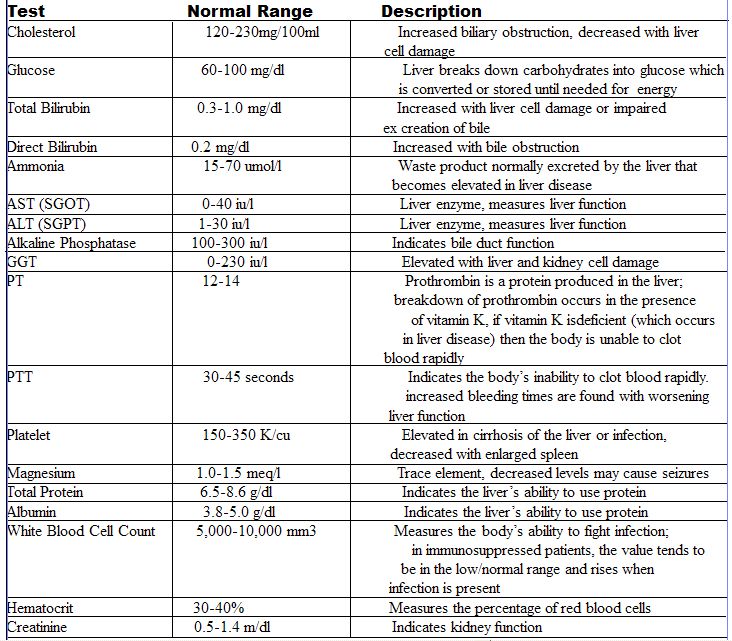 Measurement of Alt levels is an important biochemical analysis that helps identify diseases of the liver and other organs.
Measurement of Alt levels is an important biochemical analysis that helps identify diseases of the liver and other organs.
Elevated levels of Alt in the blood can only be detected during a biochemical blood test. This process does not take much time and must take place in the laboratory. Most often, this analysis is prescribed by doctors for suspected liver disease. Your doctor may order the test again to check the results and to track the progress of your treatment.
- It is important to be prepared for a blood test before taking it. Your doctor can give you specific instructions about what you can and can’t do before the test.
- The blood test is usually done on an empty stomach. Before the analysis, it is necessary to refrain from eating and drinking for about 8-12 hours.
- If you have a medical condition or are taking medication, tell the doctor who orders the blood test. Certain medications and medical conditions can affect the results of an ALT blood test.

A gastroenterologist will determine the indications for examinations, prescribe the necessary tests and interpret the results. You can trust him: he carries out diagnostics and treatment at the highest level.
Symptoms of elevated levels of Alt in a biochemical blood test
Alt is an enzyme that is found in liver cells and in small amounts in the heart, kidneys and pancreas. An elevated ALT level in a biochemical blood test may indicate various diseases.
- Jaundice – A symptom of jaundice may be associated with elevated levels of Alt in the blood. This is due to the fact that a high level of Alt indicates damage to liver cells, which can lead to disruption of its functions and the appearance of jaundice.
- Hepatitis – Elevated ALT levels may be associated with viral hepatitis, which is an infectious disease that affects the liver. Hepatitis can damage liver cells and increase blood levels of Alt.

- Cirrhosis of the liver – this severe disease is characterized by the replacement of healthy liver cells with scar tissue. An elevated Alt level is an indicator that liver cells are damaged and a consequence of cirrhosis.
- Pancreatitis – Elevated Alt together with elevated Amylase on a blood chemistry test may indicate pancreatitis. This is an inflammatory disease of the pancreas that can lead to tissue damage and elevated ALT levels.
If you suspect that you have elevated blood levels of Alt, be sure to visit your doctor for the correct diagnosis and treatment of the related conditions.
How is Alt level related to diseases of the liver and biliary tract?
Alanine aminotransferase (ALT) is an enzyme found in high concentrations in the liver and to a lesser extent in the heart, kidneys, and skeletal muscle. When the cells of these organs are damaged, Alt enters the bloodstream, as a result of which its level increases.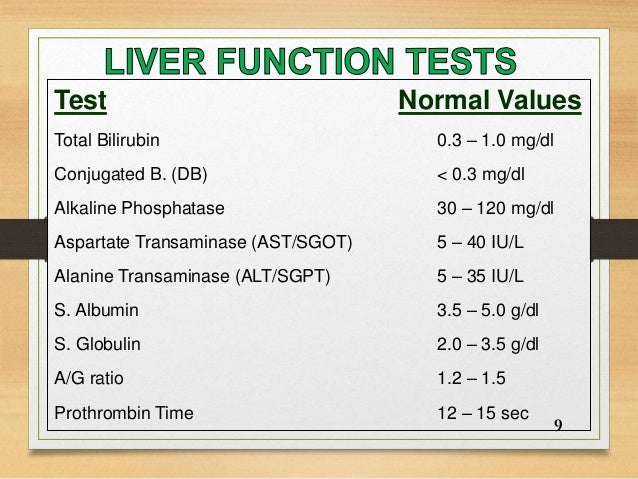
The Alt level is one of the most important indicators in the biochemical analysis of blood. High ALT values indicate damage to liver cells, and the use of this enzyme helps diagnose various diseases, including hepatitis, cirrhosis, and liver cancer.
Alt levels are also associated with biliary tract diseases such as cholelithiasis, cholangitis and cholelithiasis. Changes in blood Alt levels can help identify inflammatory processes in the liver, such as steatosis (fatty degeneration) and alcoholic hepatitis.
It should be noted that elevated levels of Alt can be caused not only by diseases of the liver and biliary tract, but also by taking certain medications, intense physical exertion, injuries and operations. Therefore, it is important to consult a doctor and undergo additional tests to obtain an accurate diagnosis.
The role of Alt in the diagnosis of heart and muscle diseases
Alanine aminotransferase (Alt) is an enzyme that is a marker of damage to liver cells, but not only. A number of studies have shown that ALT is also involved in the diagnosis of certain diseases related to the heart and muscles.
A number of studies have shown that ALT is also involved in the diagnosis of certain diseases related to the heart and muscles.
High levels of Alt may indicate damage to the cardiovascular system, such as myocardial infarction or fibrosis of the heart muscle. Also, in patients with heart disease, an increase in serum ALT is usually observed. However, an increase in Alt often accompanies other blood biochemical parameters, such as AST and LDH.
In addition, many muscle disorders, such as myopathies, can also lead to elevated levels of Alt in the blood. This is due to the fact that Alt is present not only in the liver, but also in the muscles, especially in the skeletal ones.
In general, Alt can be a useful indicator of heart and muscle disease, but elevation is not 100% indicative of these diseases. For an accurate diagnosis, additional tests and examination by a doctor are necessary.
How to reduce the level of Alt in the biochemical analysis of blood?
A high level of Alt in a biochemical blood test may be a sign of a pathological process in the liver or another organ. Therefore, in order to reduce the level of Alt, it is necessary to conduct an examination and identify the cause of its increase.
Therefore, in order to reduce the level of Alt, it is necessary to conduct an examination and identify the cause of its increase.
If your doctor has given you a recommendation to change your lifestyle, you should follow it and lead a healthy lifestyle. Try to avoid alcohol, smoking, and fatty, fried, and salty foods. Include more fruits, vegetables, grains and proteins in your diet.
You can also take medications to help lower your Alt levels. But only after consulting a doctor, as some drugs can cause side effects and have contraindications.
In some cases, if a patient is diagnosed with liver disease, treatment with narrowly targeted drugs may be required. After the course of treatment, it is necessary to periodically undergo control studies to determine the level of ALT and evaluate the effectiveness of treatment.
How to act if the level of Alt in the blood is high
An increase in the level of Alt (alanine aminotransferase) in the blood can be a sign of various diseases of the liver, heart, pancreas and other organs.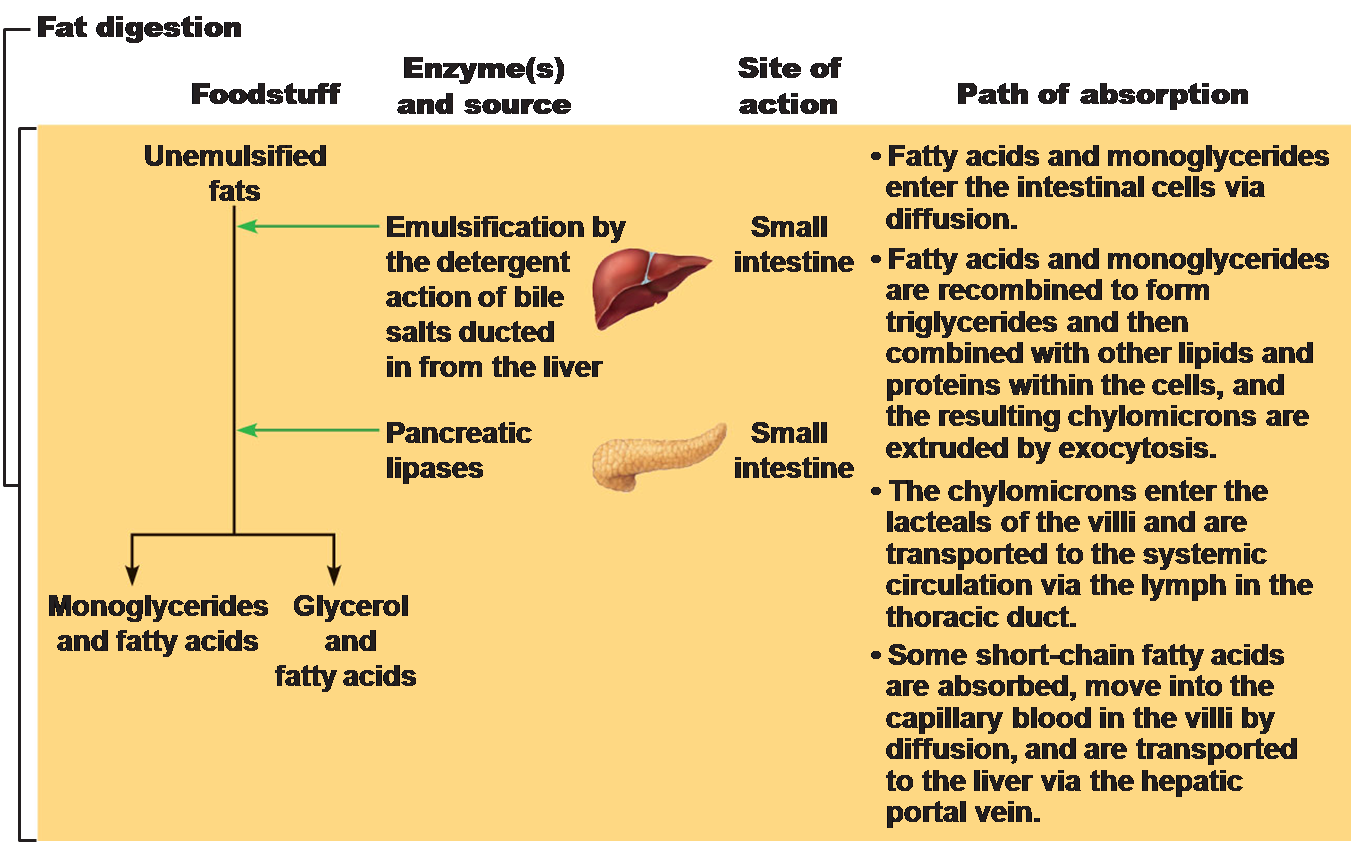 If you receive blood test results with elevated ALT levels, you should see your doctor for diagnosis and further treatment.
If you receive blood test results with elevated ALT levels, you should see your doctor for diagnosis and further treatment.
Your doctor may recommend the following steps to determine the cause of your elevated ALT levels:
- Additional blood and urine tests
- Ultrasound of the abdomen and heart
- CT or MRI of organs
- Biopsy of the liver or other affected organs
9 0002 Depending on Causes of elevated Alt levels, your doctor may prescribe appropriate treatment, prescribe a diet and drinking regimen, and recommend that you stop drinking alcohol.
It is important to remember that self-treatment of elevated ALT levels can be dangerous and lead to poor health.
Alt and some medications
Alt and antibiotics
Some antibiotics may cause an increase in the level of Alt in the blood. This is due to toxic effects on the liver, which can lead to hepatitis or cirrhosis of the liver. Representatives of macrolide antibiotics, such as azithromycin and clarithromycin, can cause a similar effect.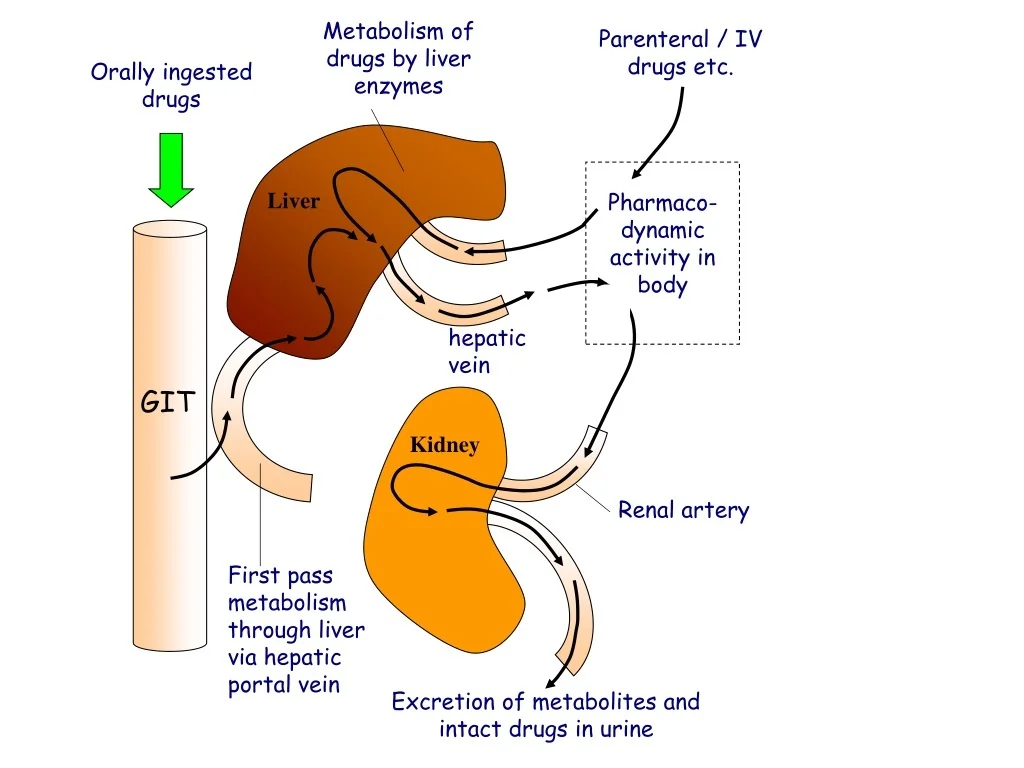
Alt and antivirals
Hepatitis C is sometimes treated with drugs that can also increase blood levels of Alt. These are antiviral drugs such as Interferon alfa and Ribavirin. There is also a risk of liver toxicity when using ciprofloxacin.
Alt and antifungal drugs
Some antifungal drugs can increase blood levels of Alt. For example, fluconazole and itraconazole have a pronounced hepatotoxic effect. In this regard, when using them, it is necessary to control the level of Alt in the blood.
Alt and analgesics
Long-term use of analgesics with acetaminophen may lead to an increase in blood levels of Alt. Taking paracetamol and other analgesics can cause dystrophic changes in the liver, which negatively affects the level of Alt.
Alt and cholesterol-lowering drugs
Statins are drugs used to lower blood cholesterol levels. However, with prolonged use of statins, an increase in the level of Alt in the blood is possible. This fact may indicate the development of hepatitis or the threat of the development of chronic liver diseases.

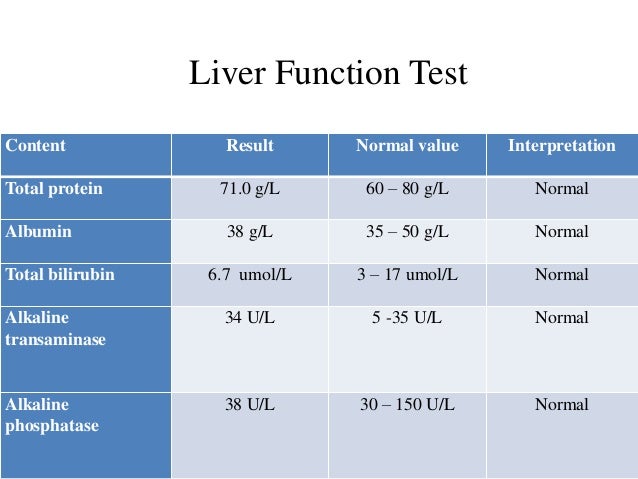 Normal values are about 9.5 to 13.8 seconds.
Normal values are about 9.5 to 13.8 seconds. Normal platelet counts are about 150,000 to 400,000 per (µL).
Normal platelet counts are about 150,000 to 400,000 per (µL). Normal levels of ALP are about 45 to 115 U/L.
Normal levels of ALP are about 45 to 115 U/L.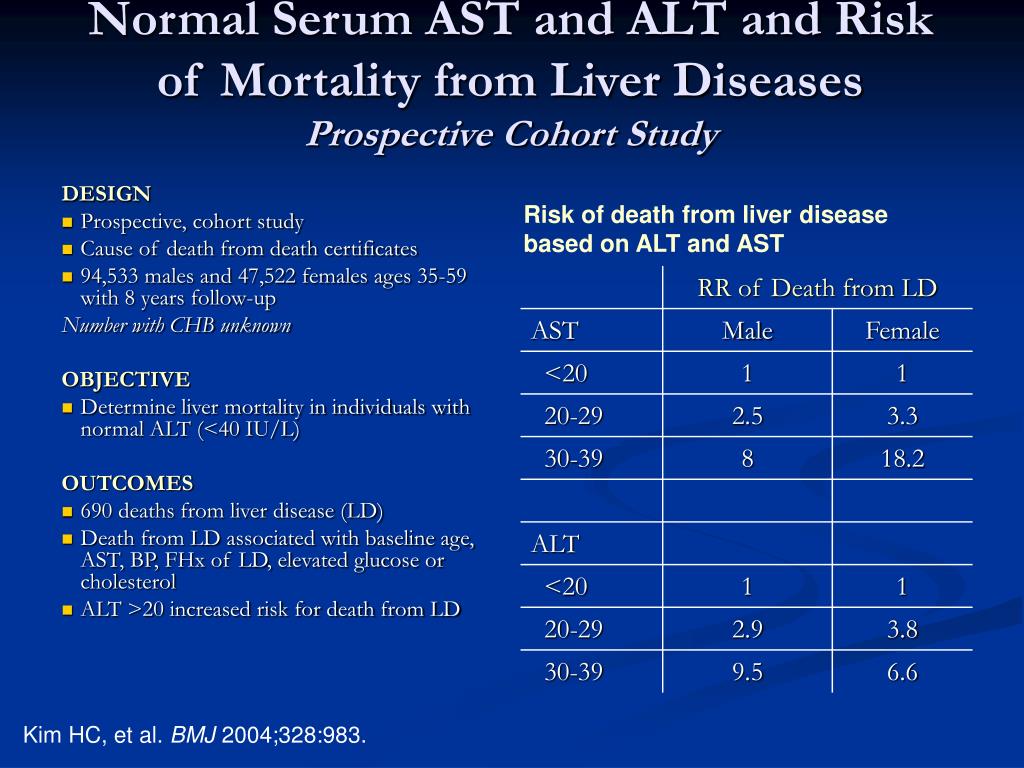
 In chronic alcohol liver disease or alcoholic cirrhosis, slight elevation of ALT and AST may be observed, whereas, in acute alcoholic hepatitis, high liver enzyme numbers are often seen.
In chronic alcohol liver disease or alcoholic cirrhosis, slight elevation of ALT and AST may be observed, whereas, in acute alcoholic hepatitis, high liver enzyme numbers are often seen.
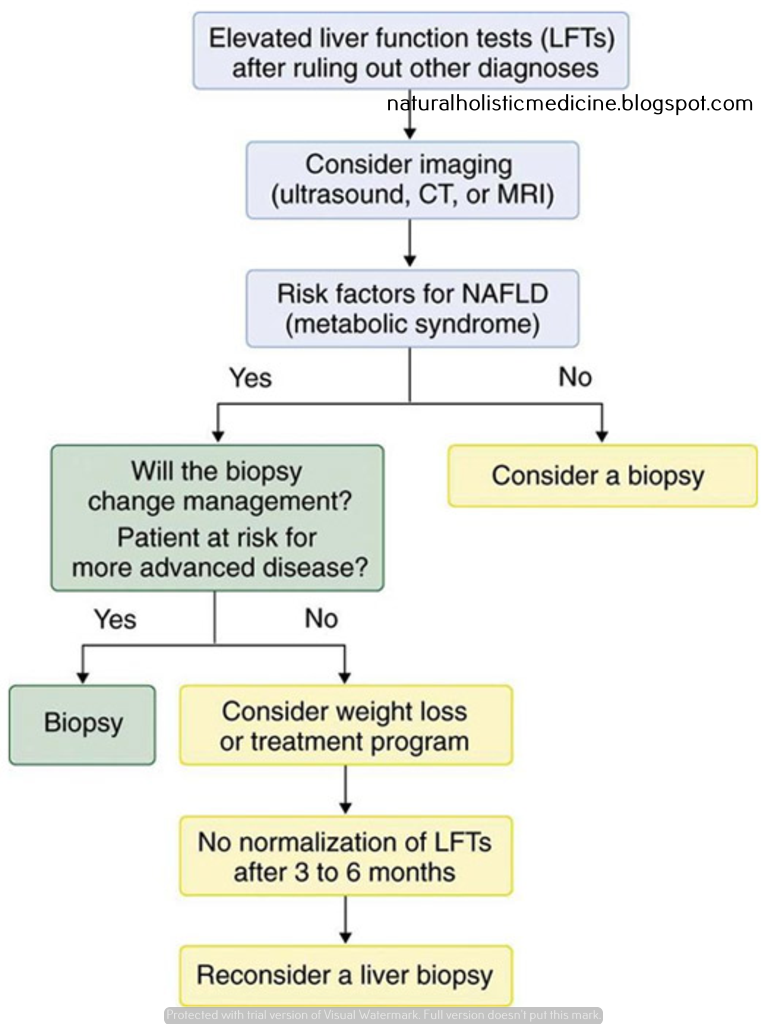 1 Liver criteria: important information about the condition of a vital organ
1 Liver criteria: important information about the condition of a vital organ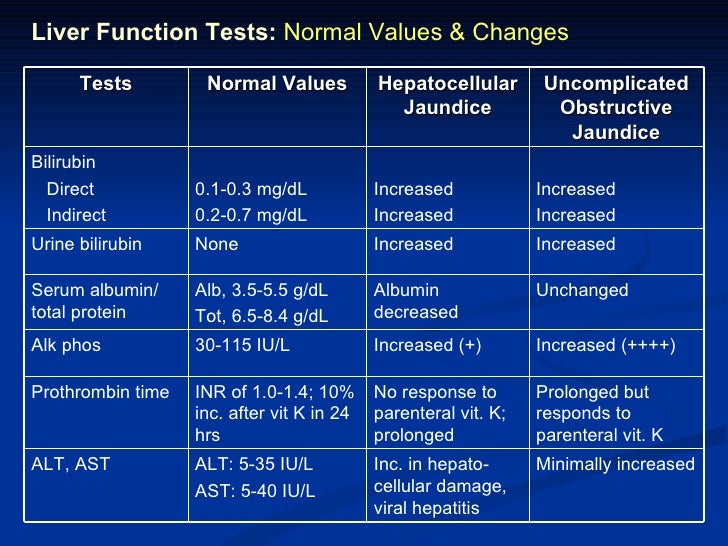 1.1 What is ALT?
1.1 What is ALT? 10 How to reduce the level of Alt in the biochemical analysis of blood?
10 How to reduce the level of Alt in the biochemical analysis of blood?

